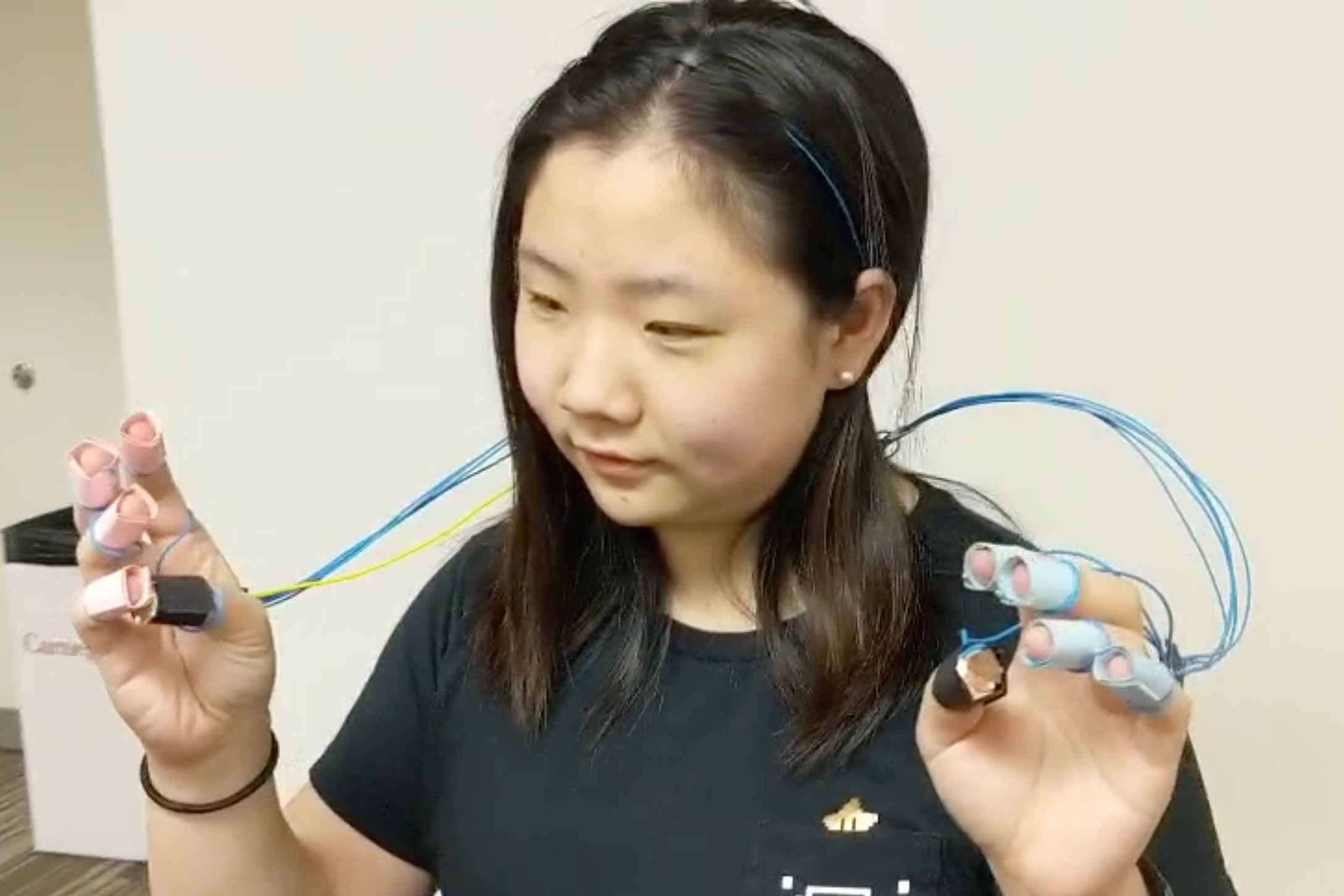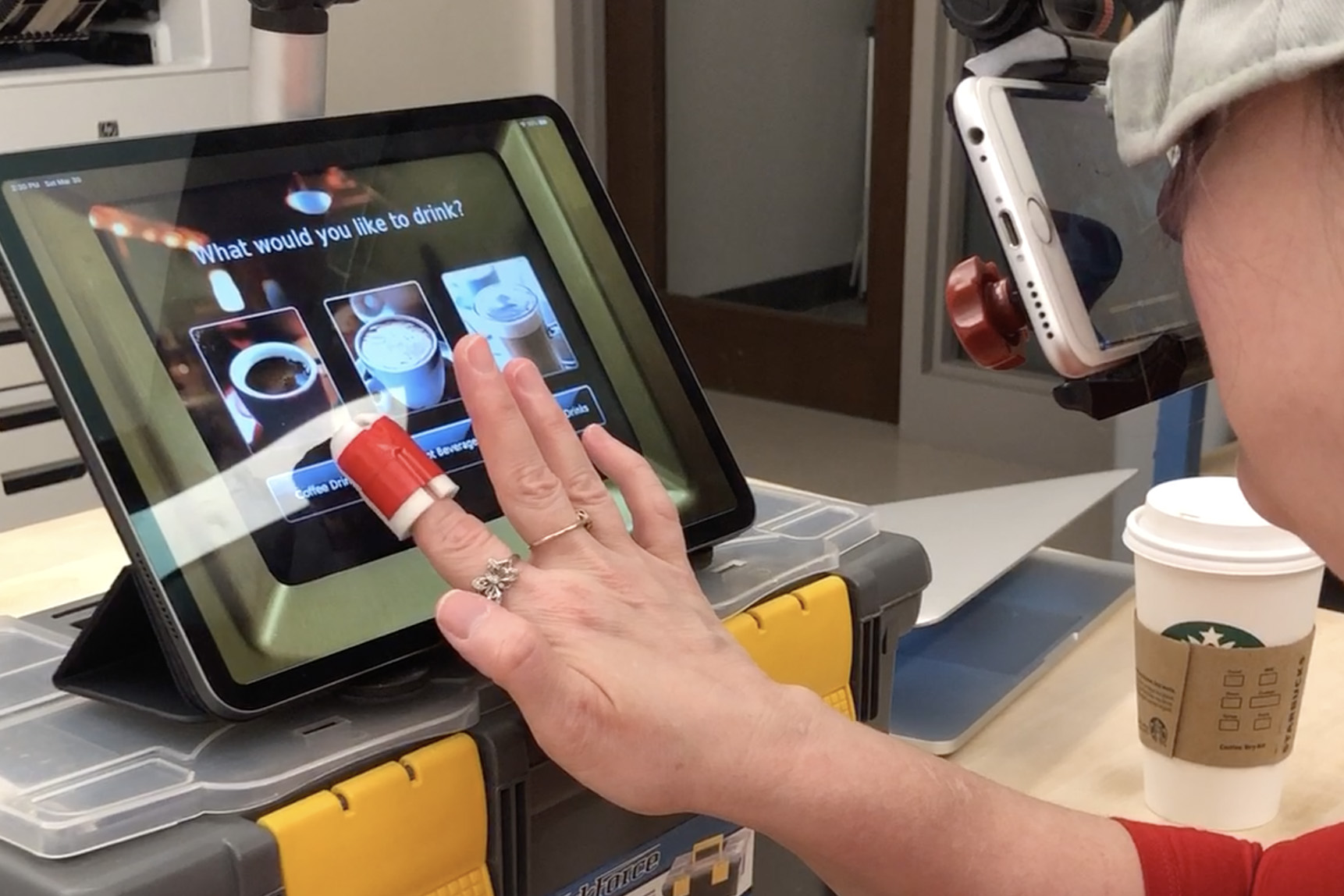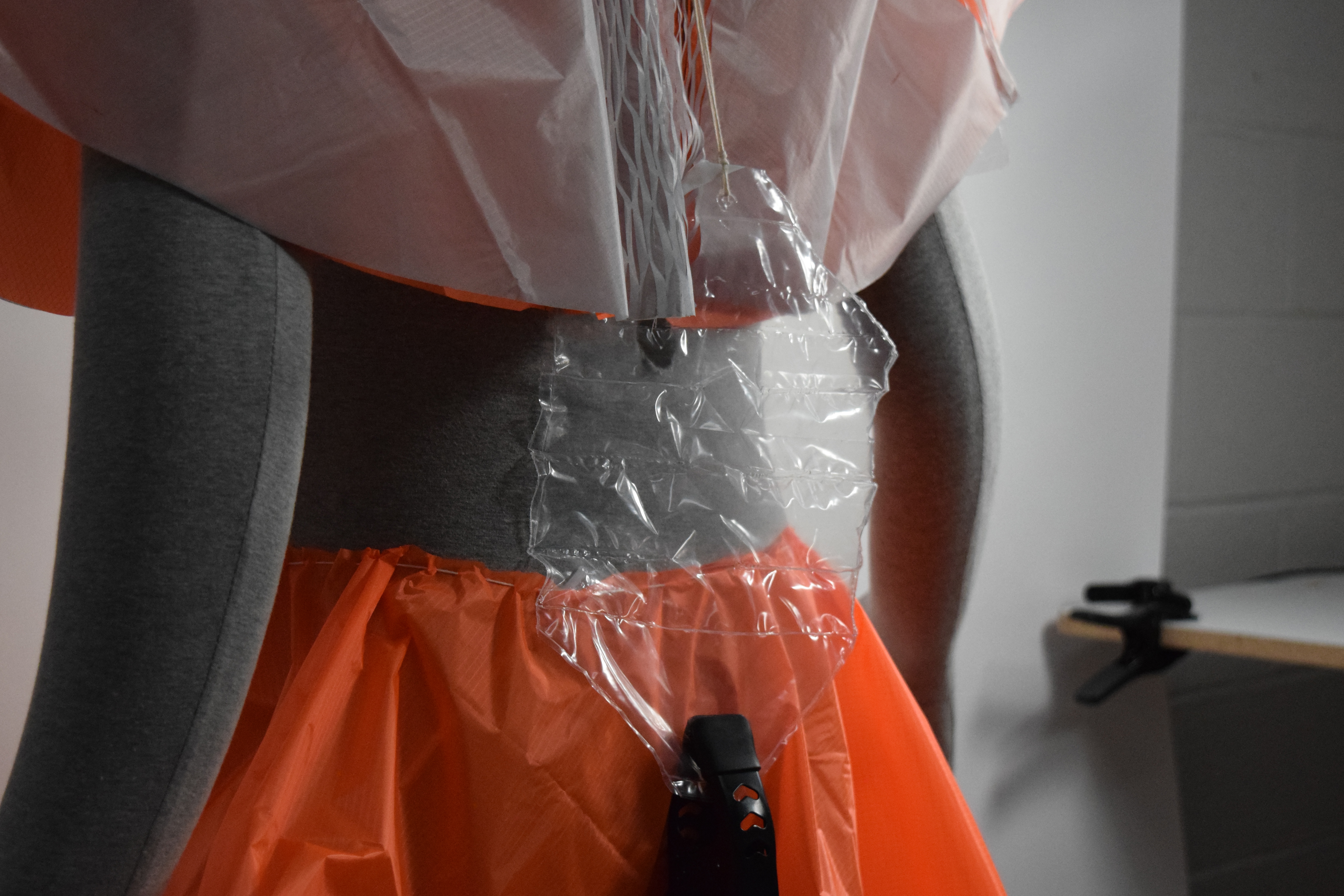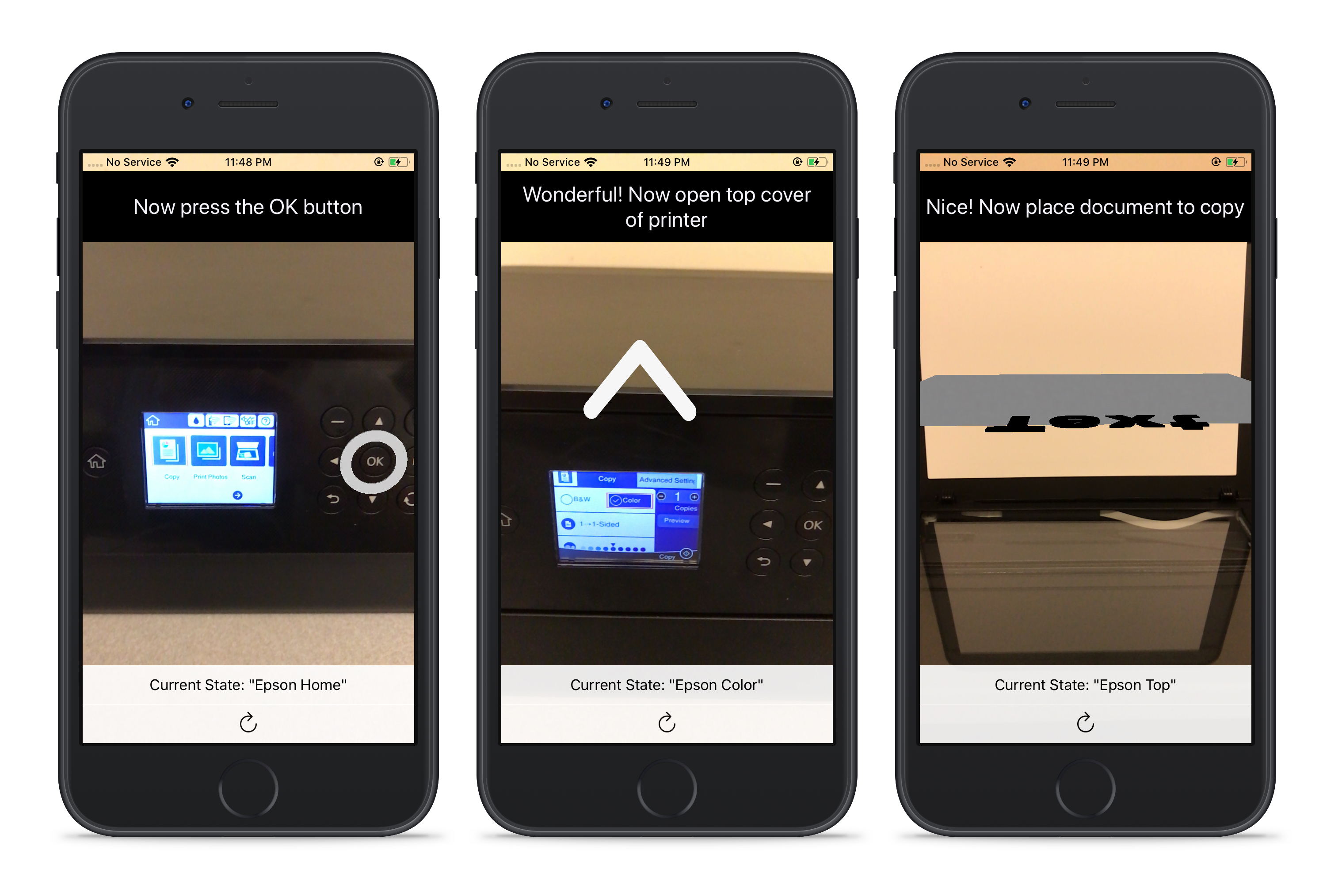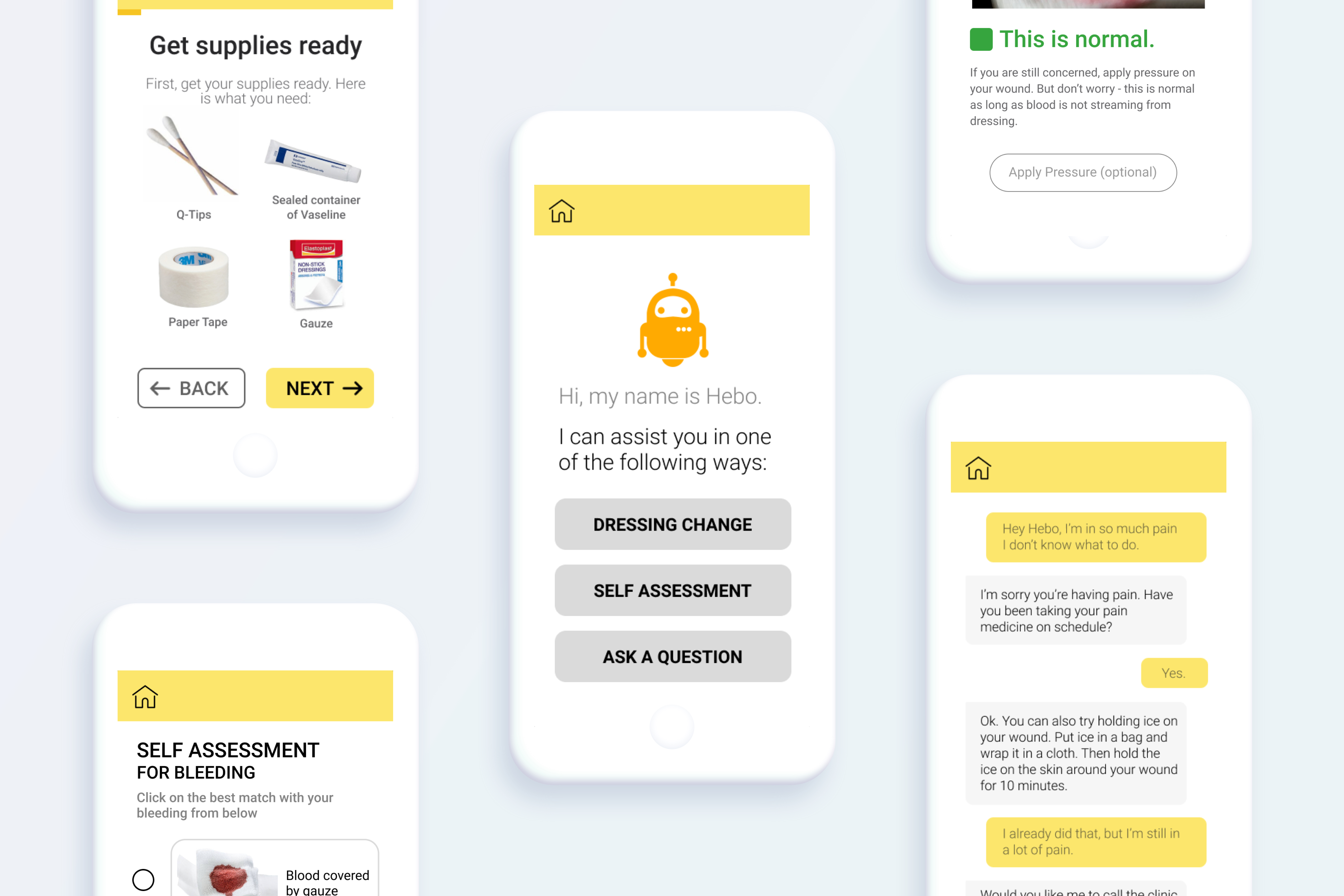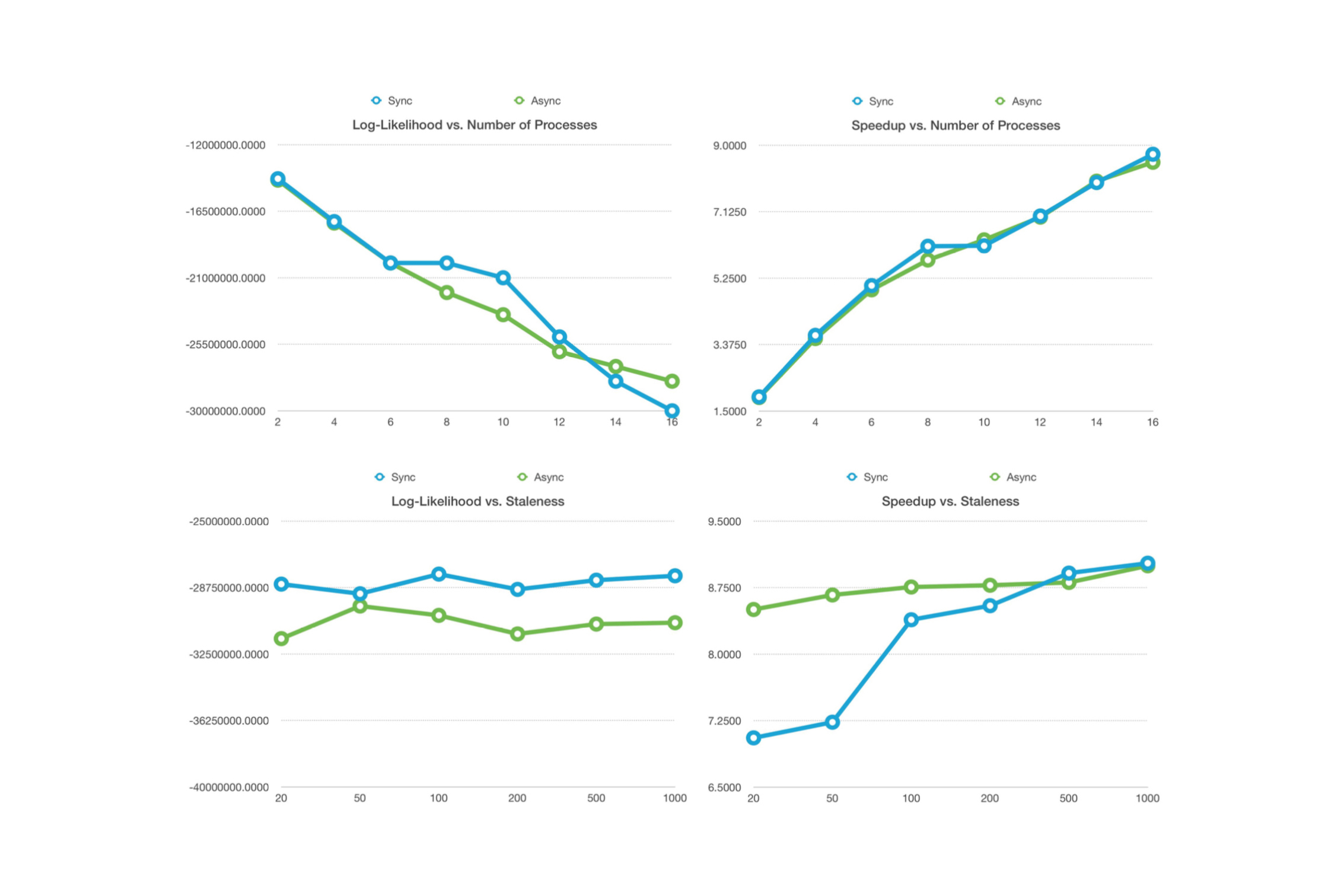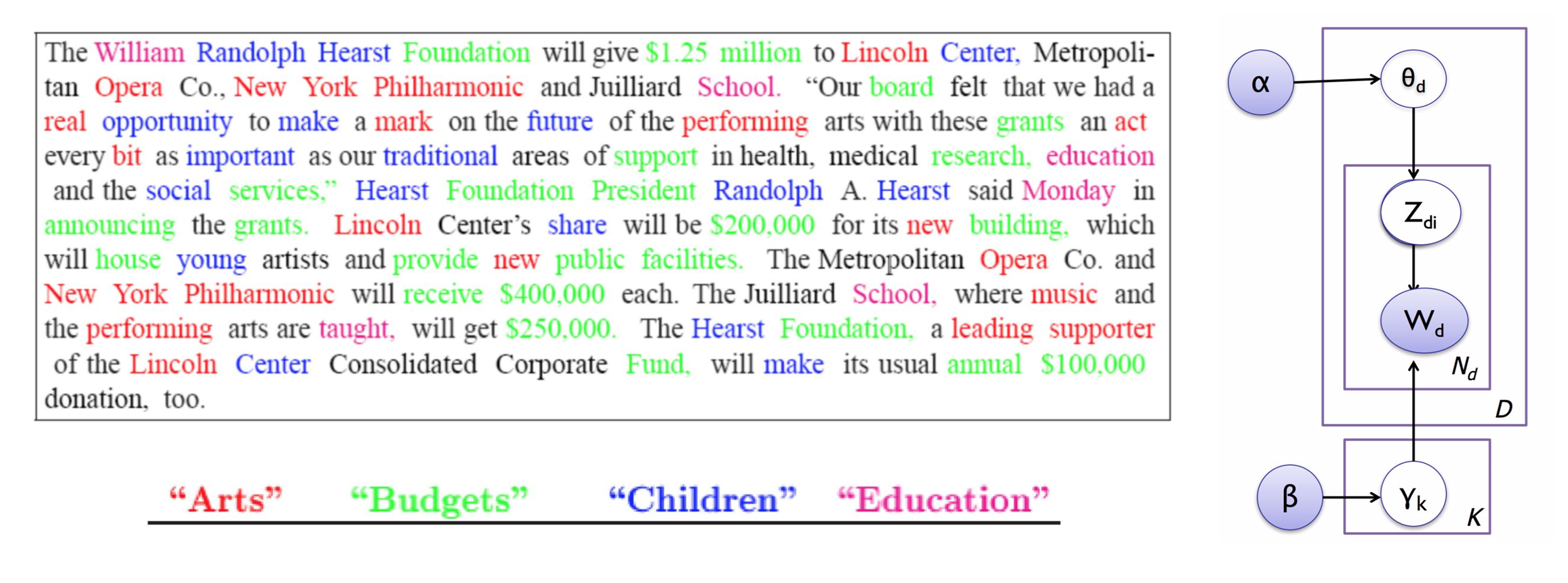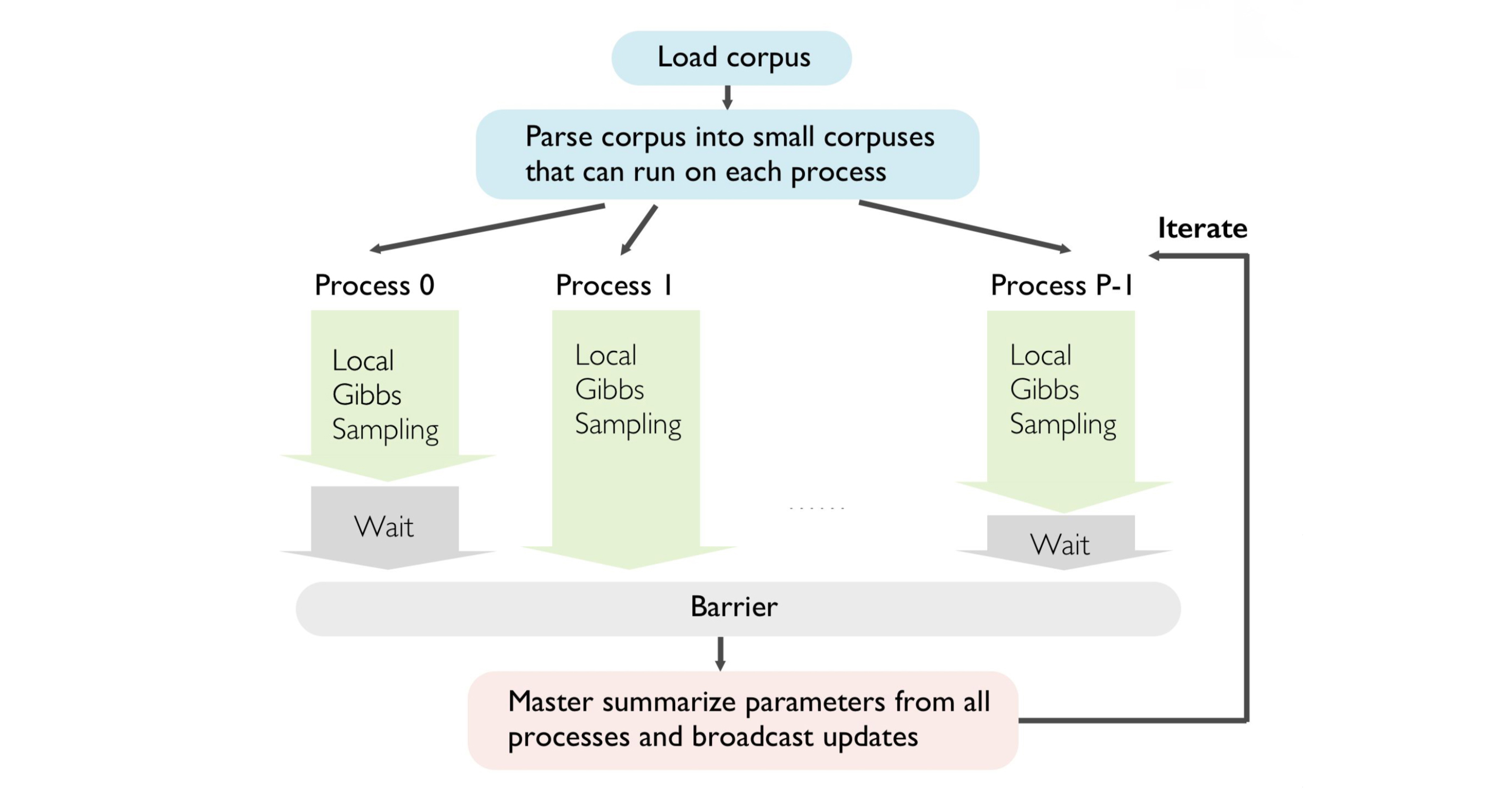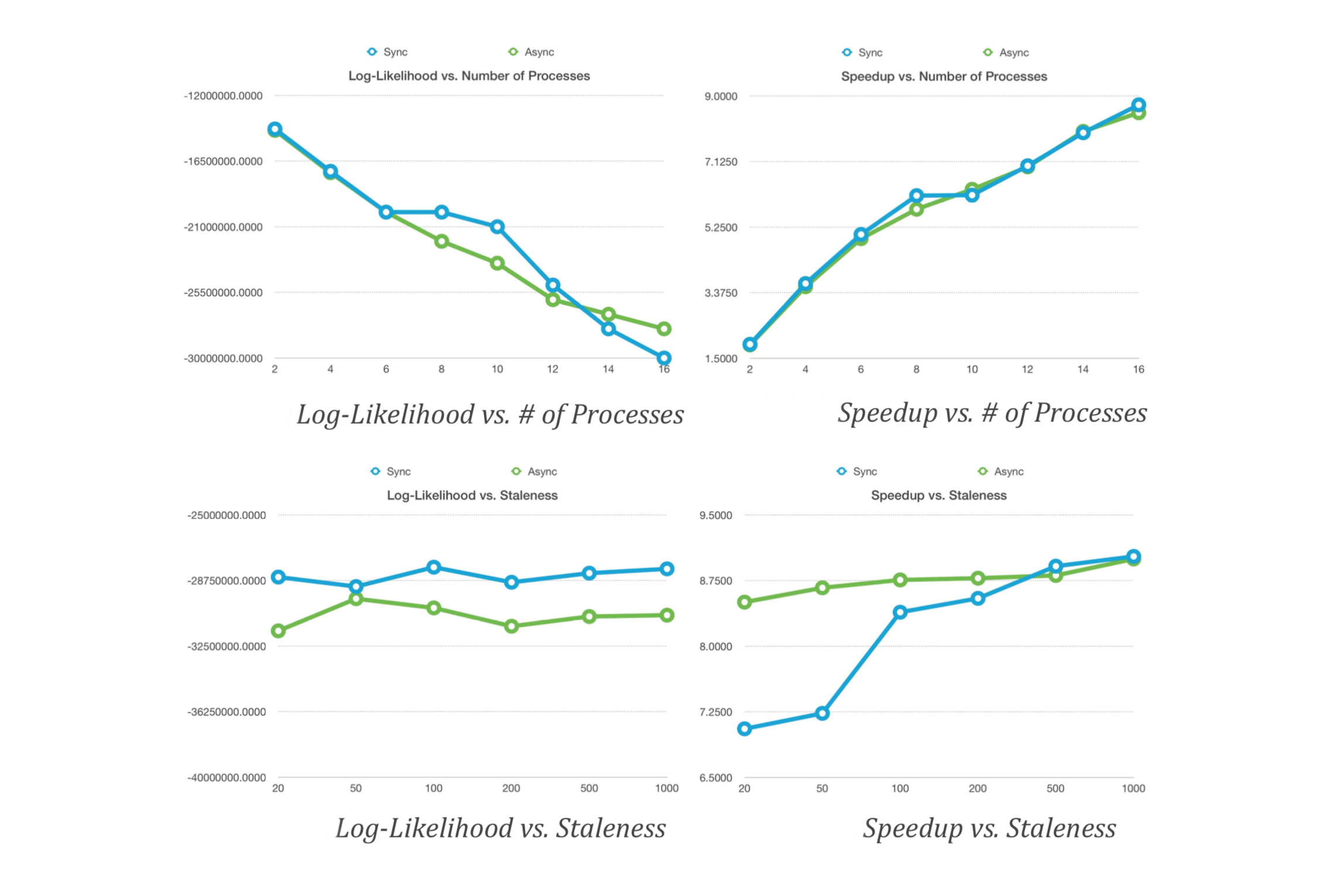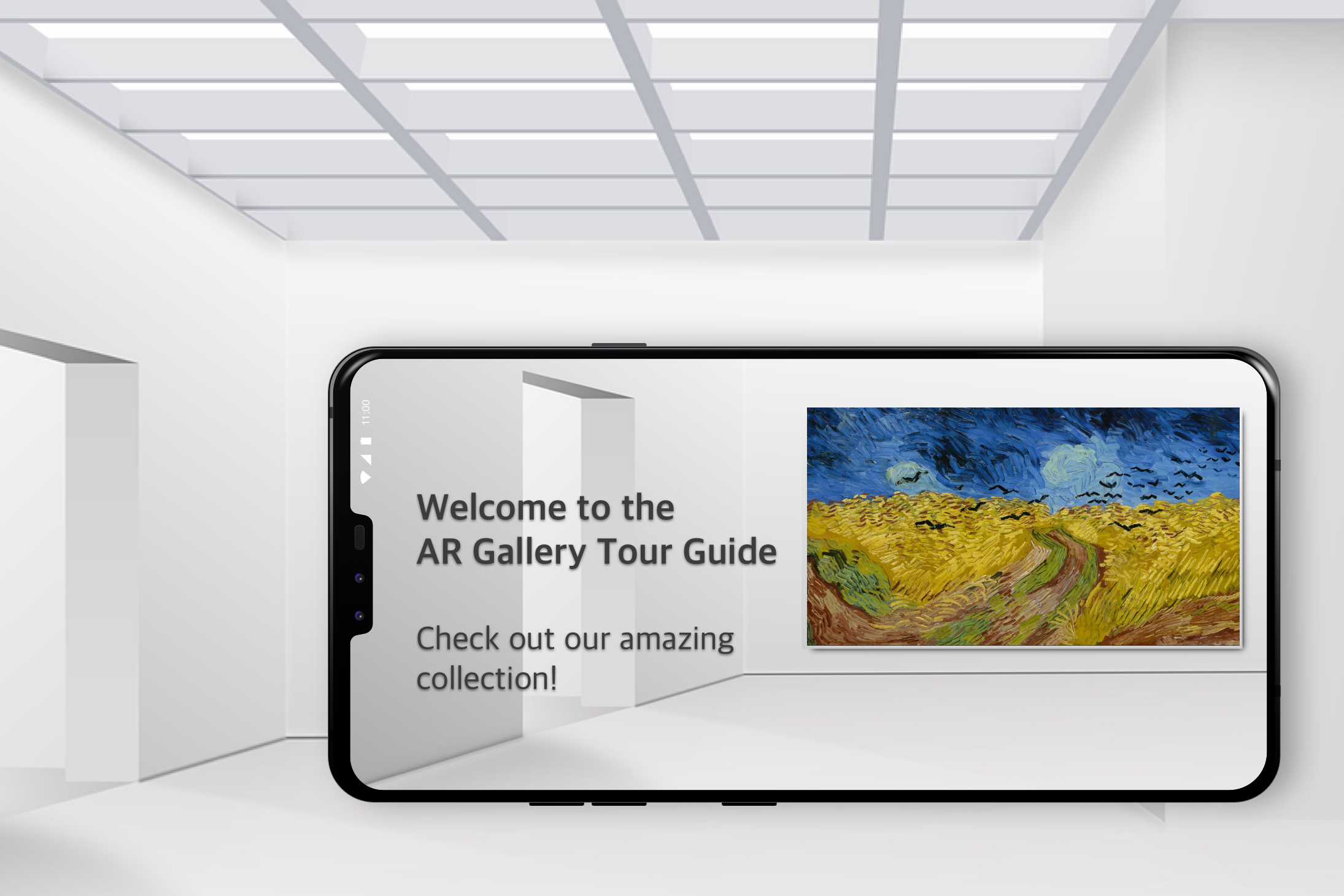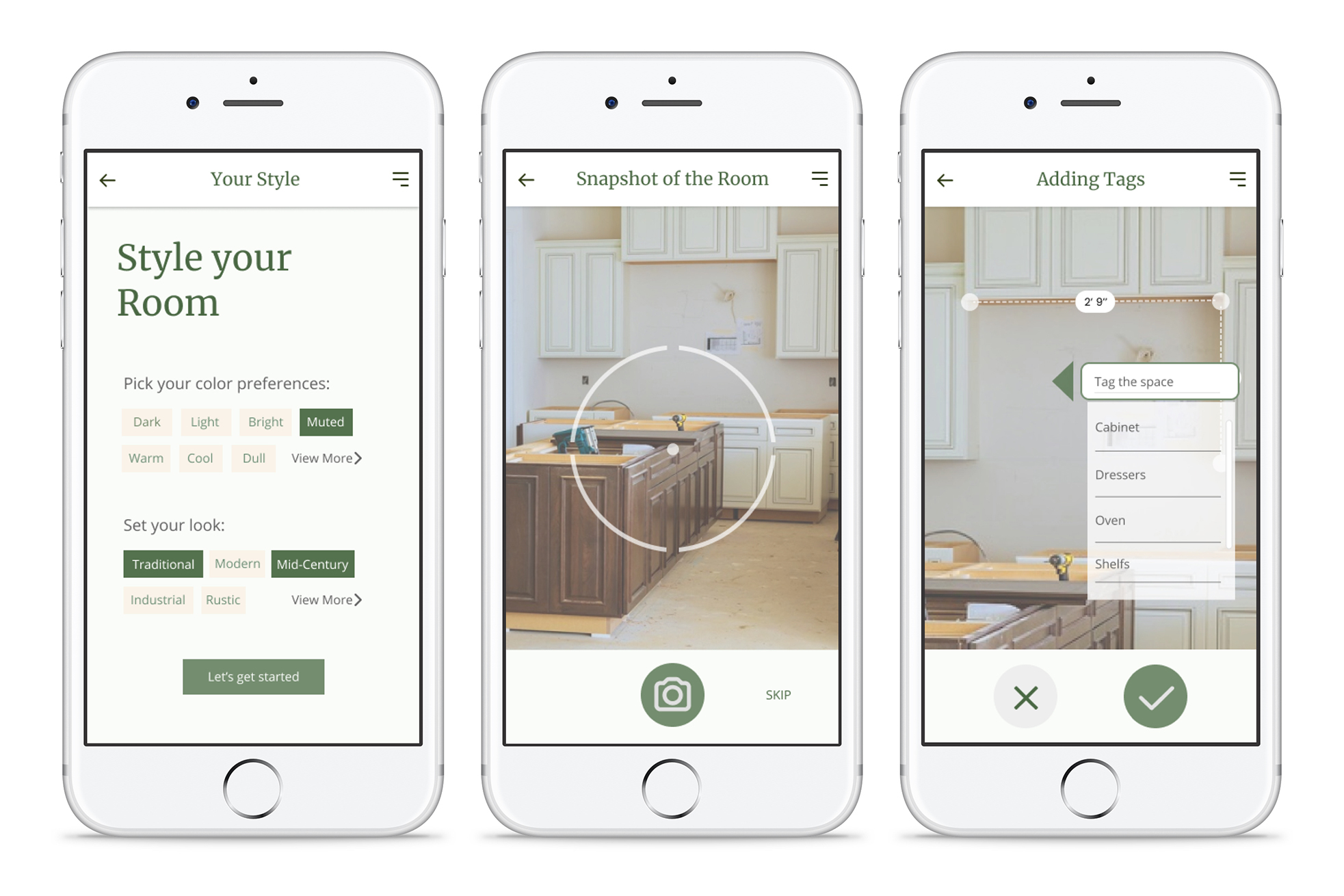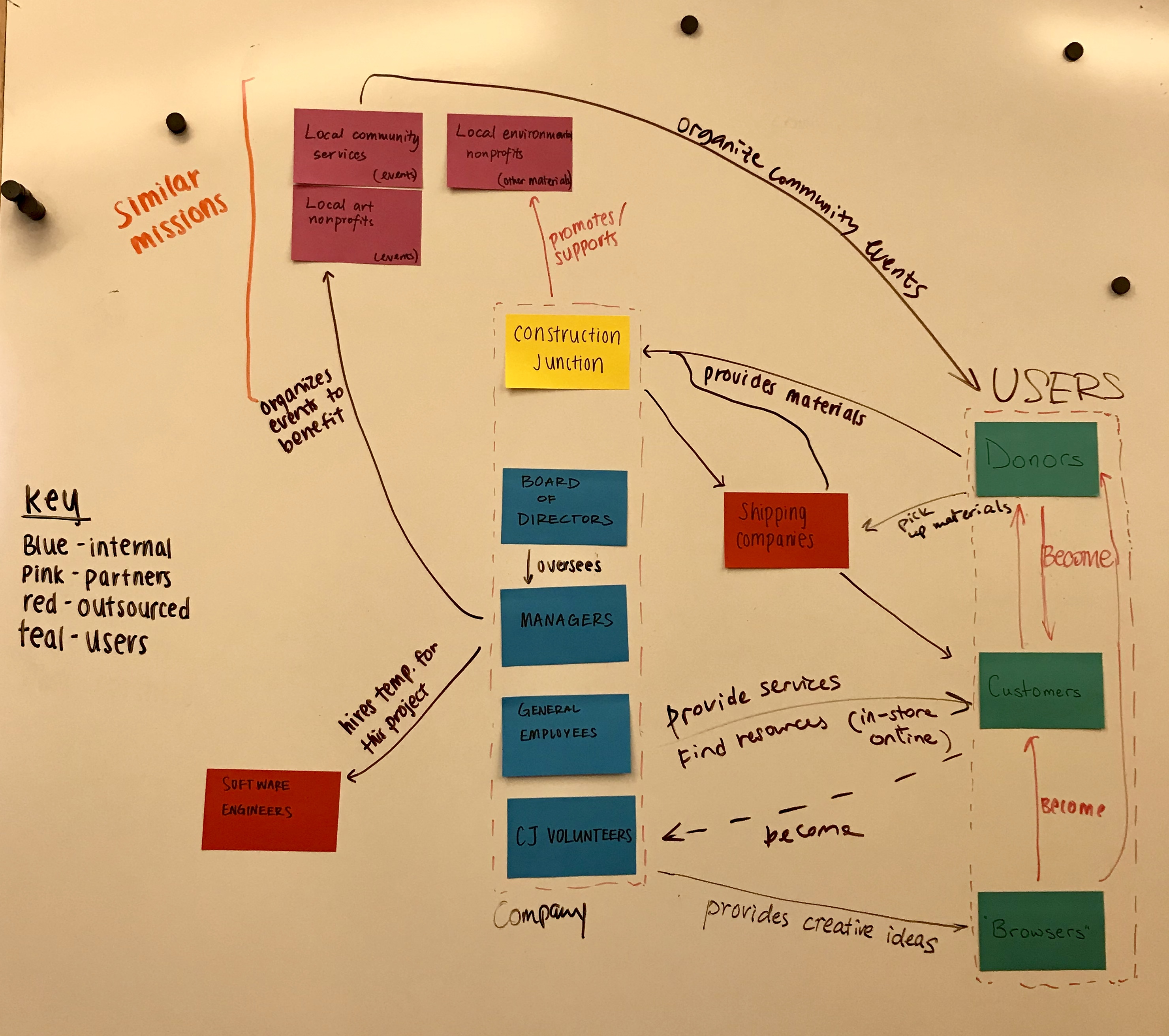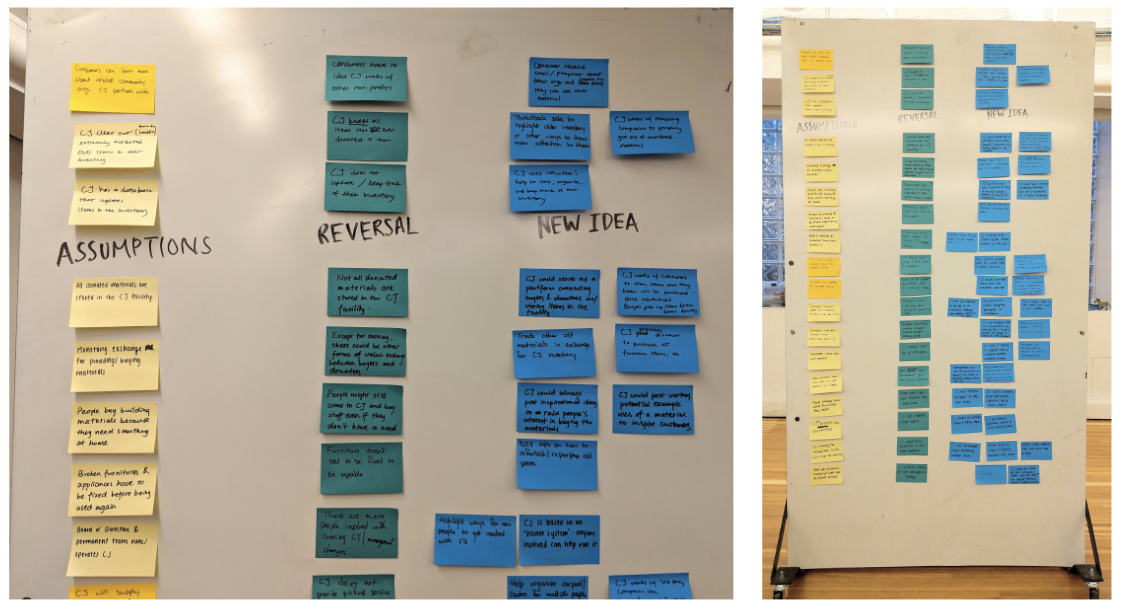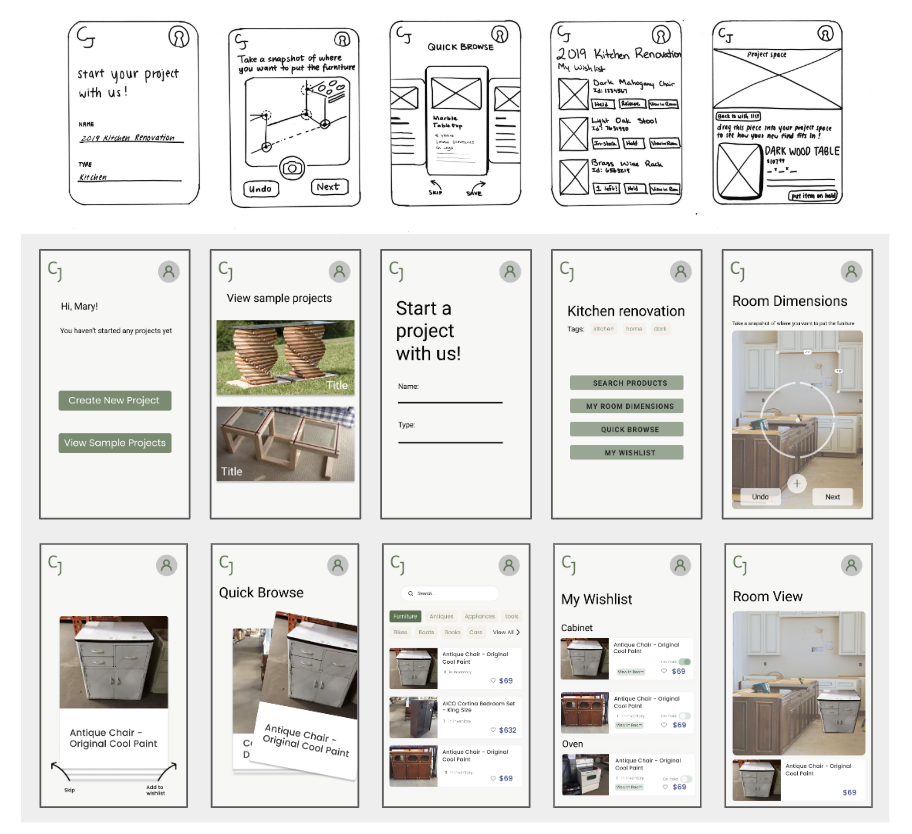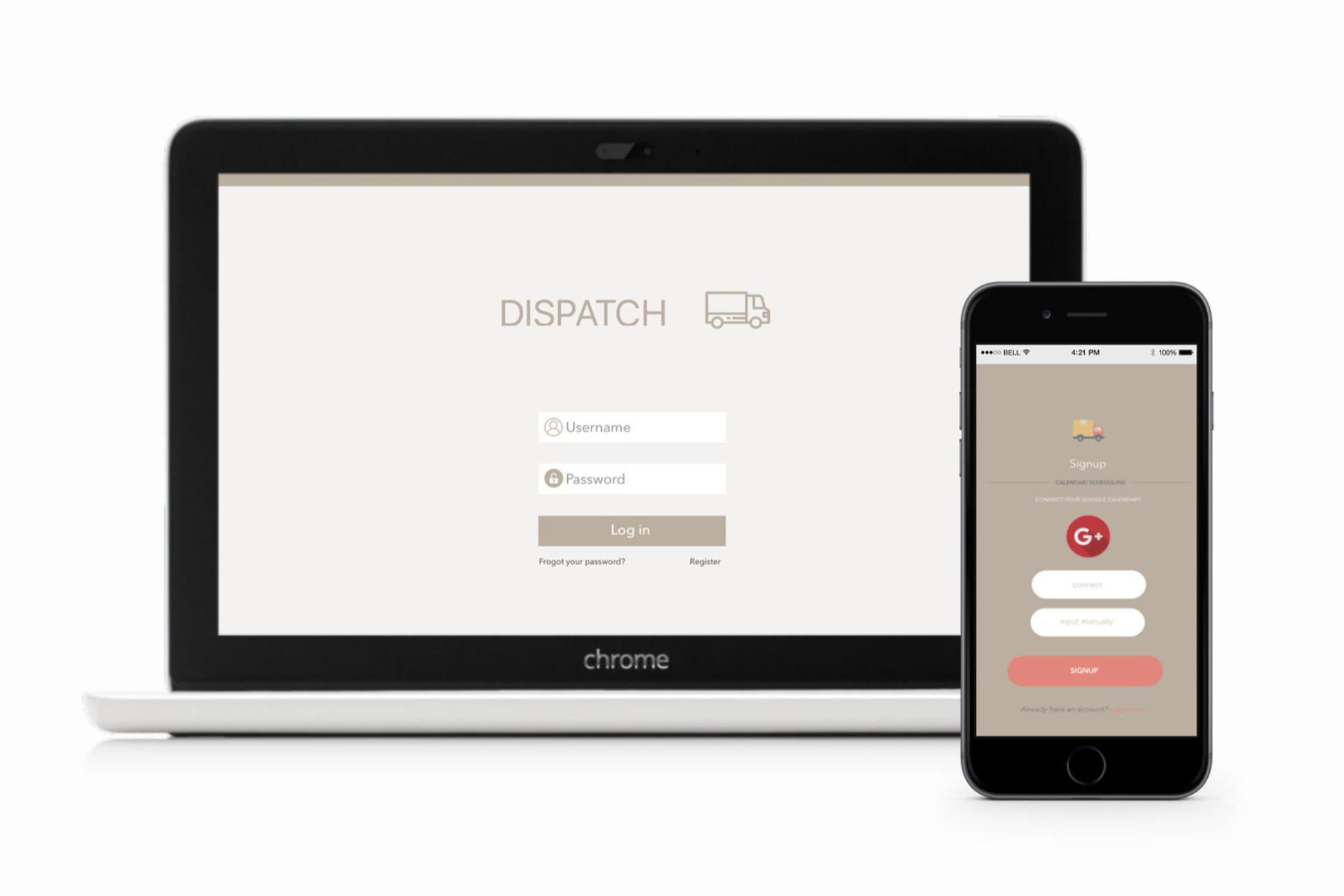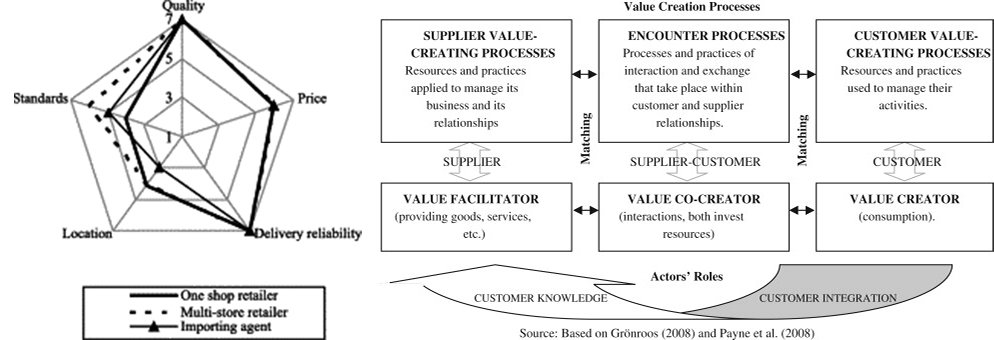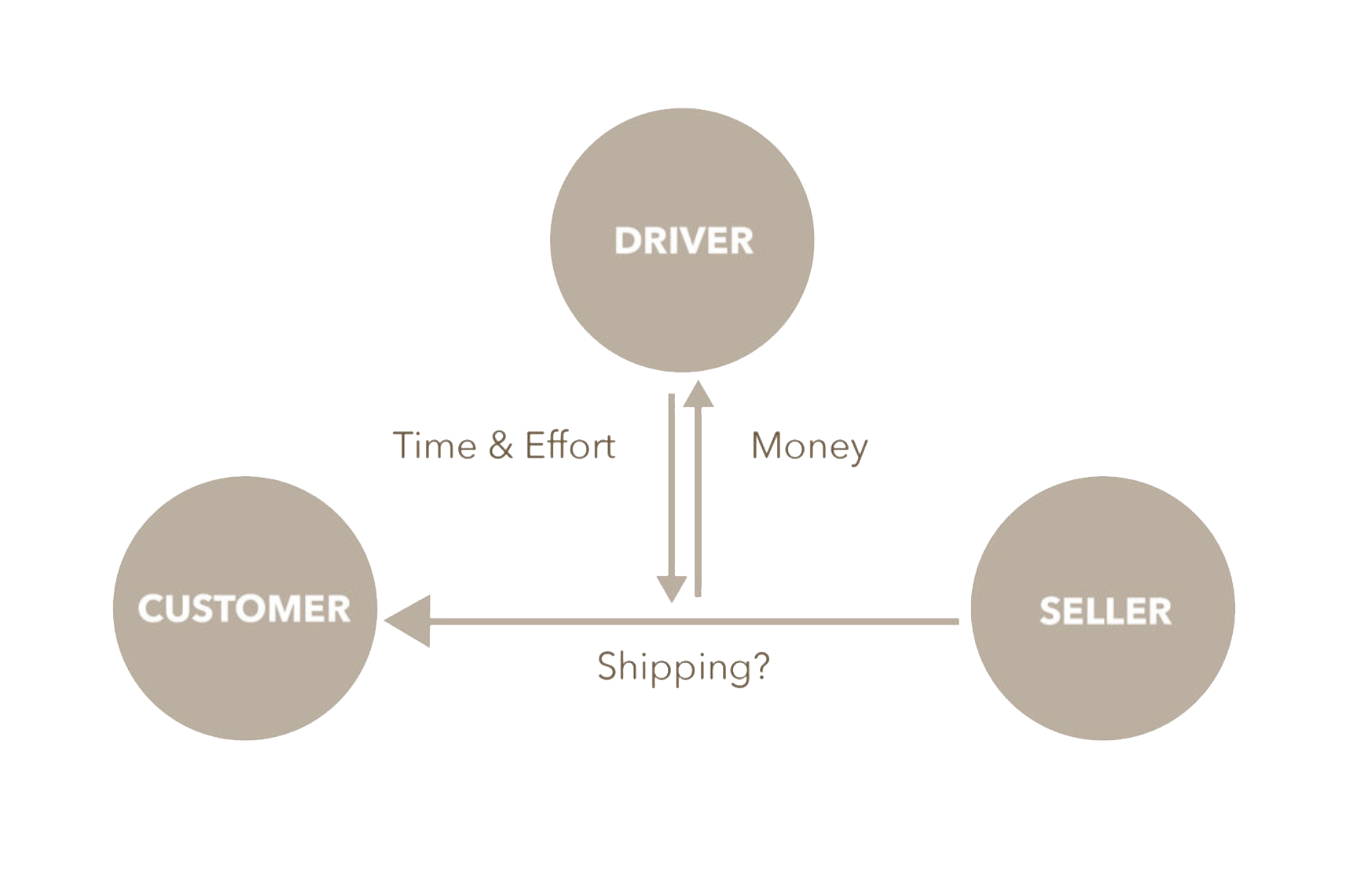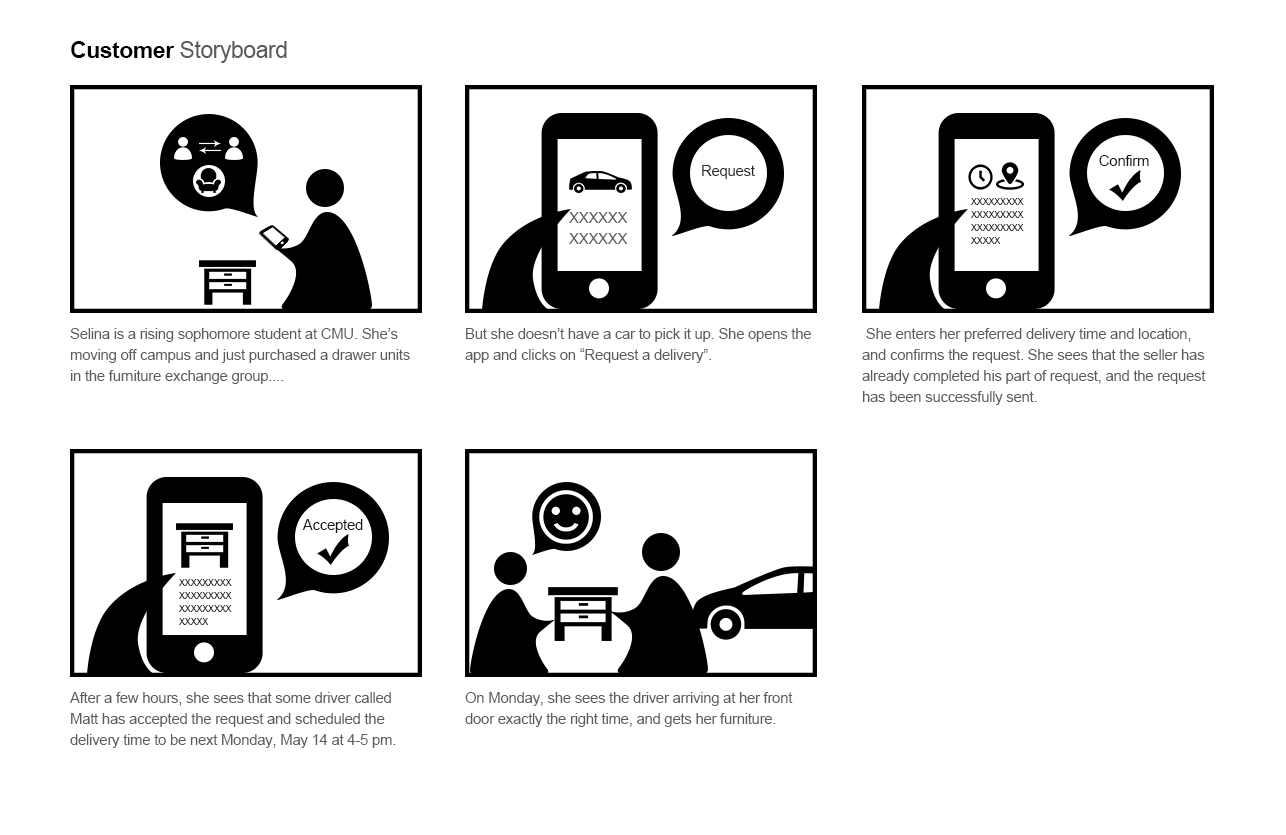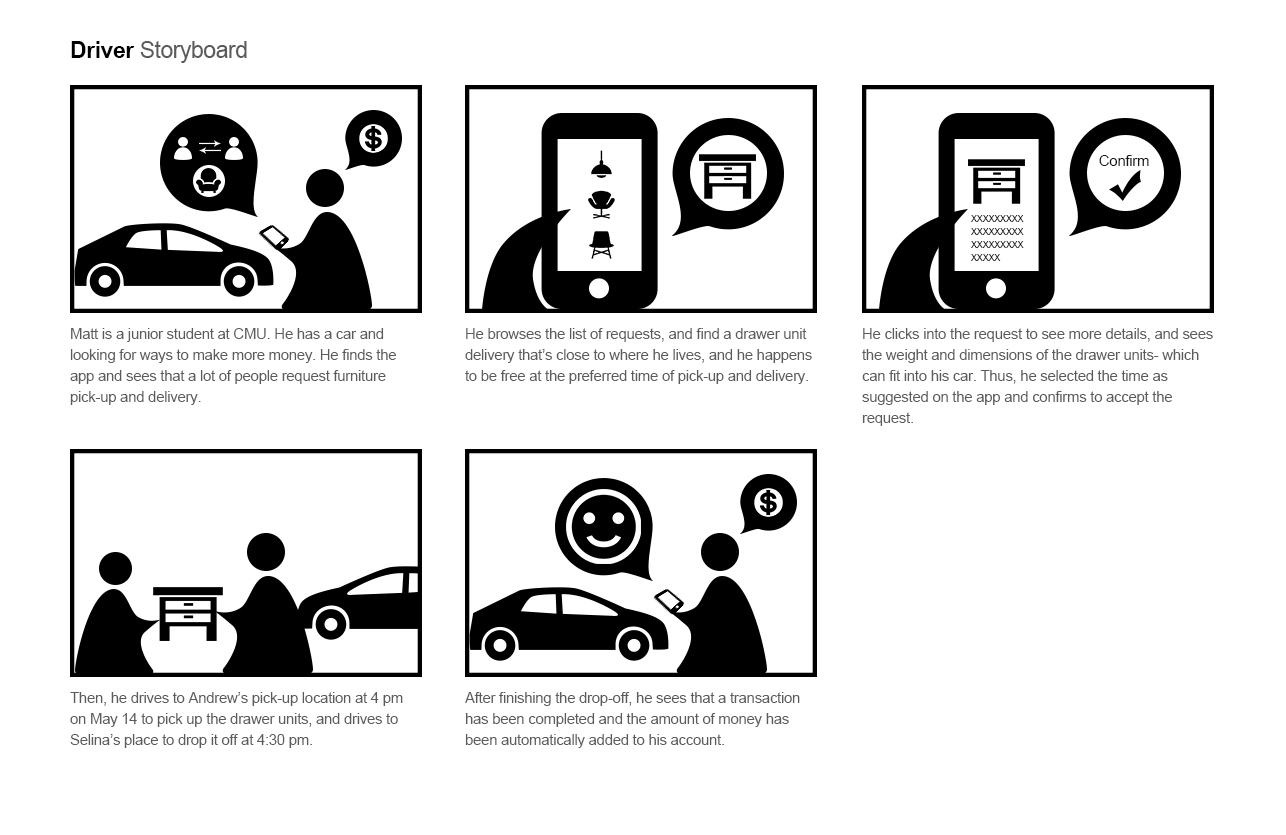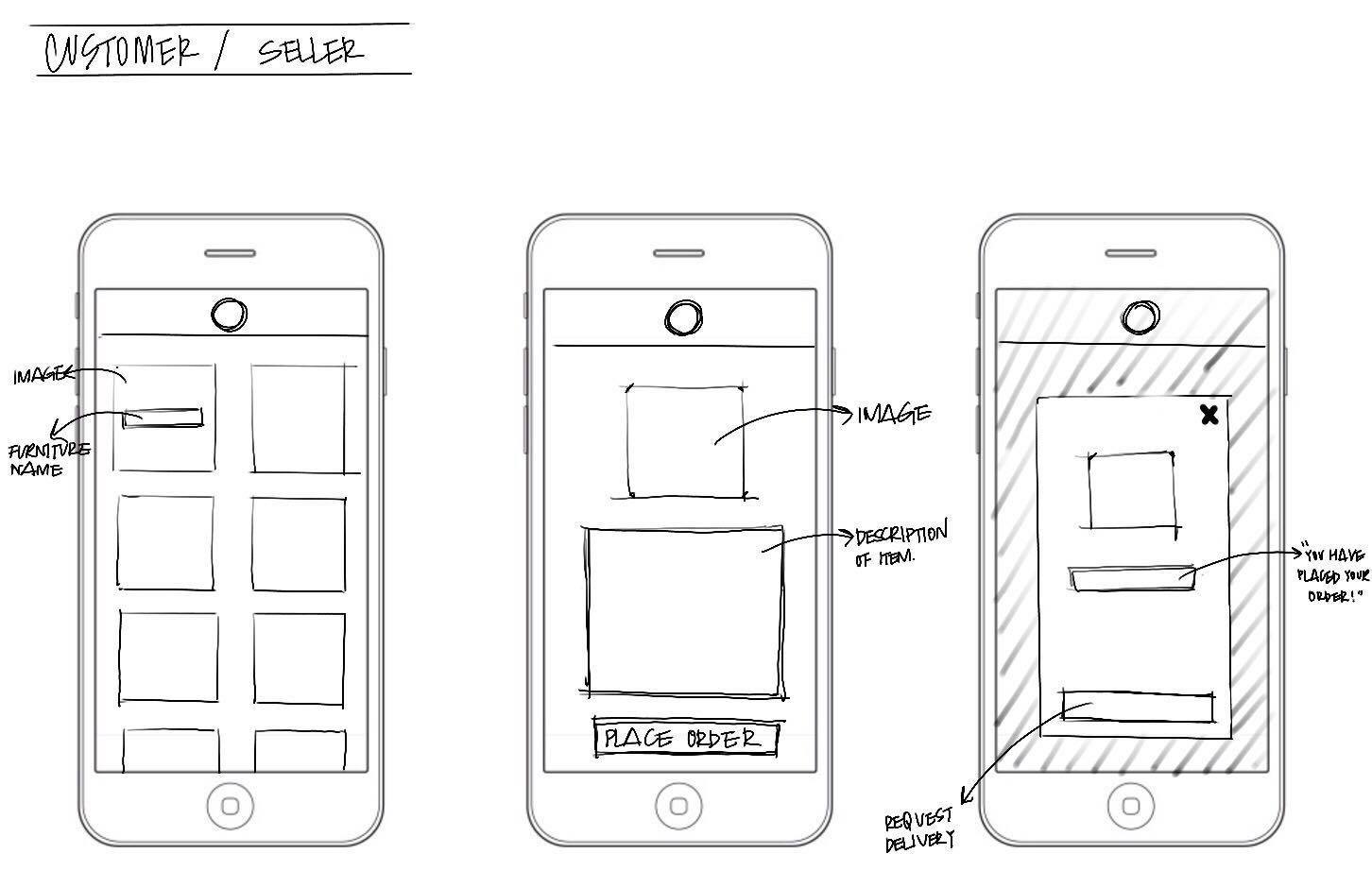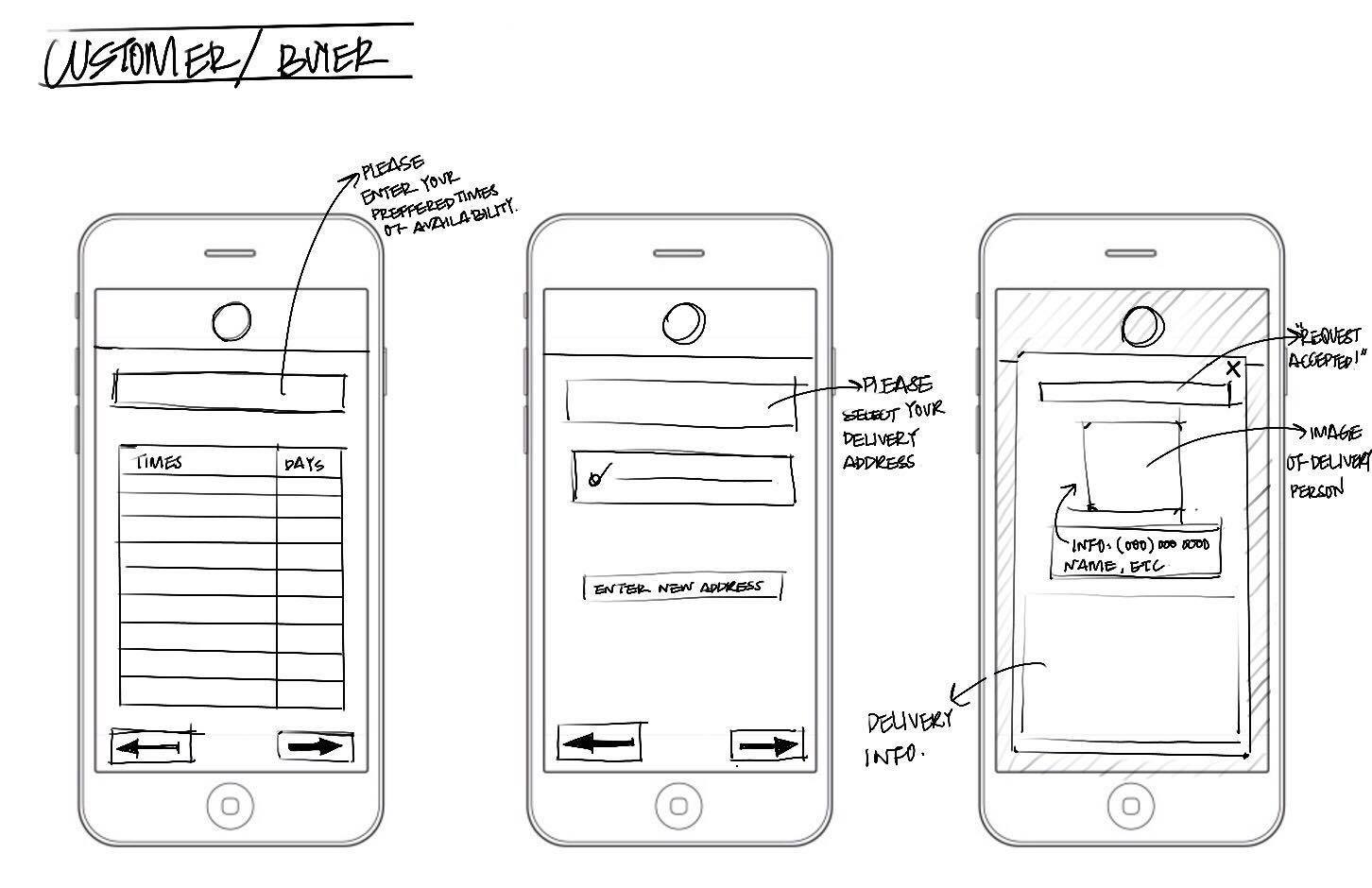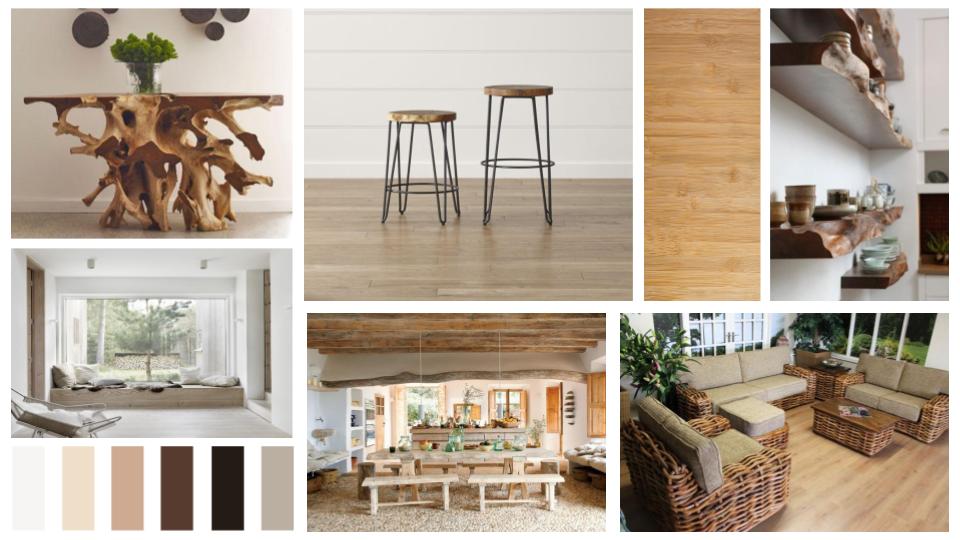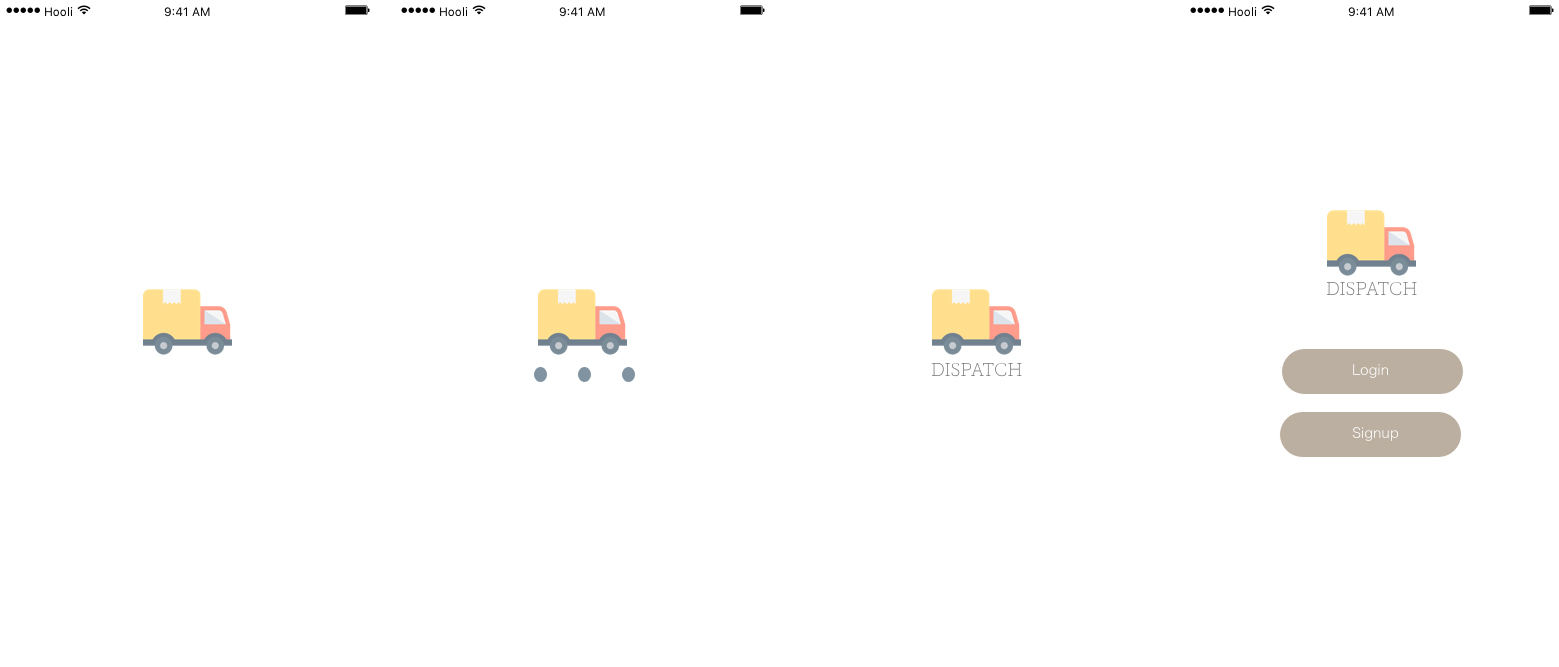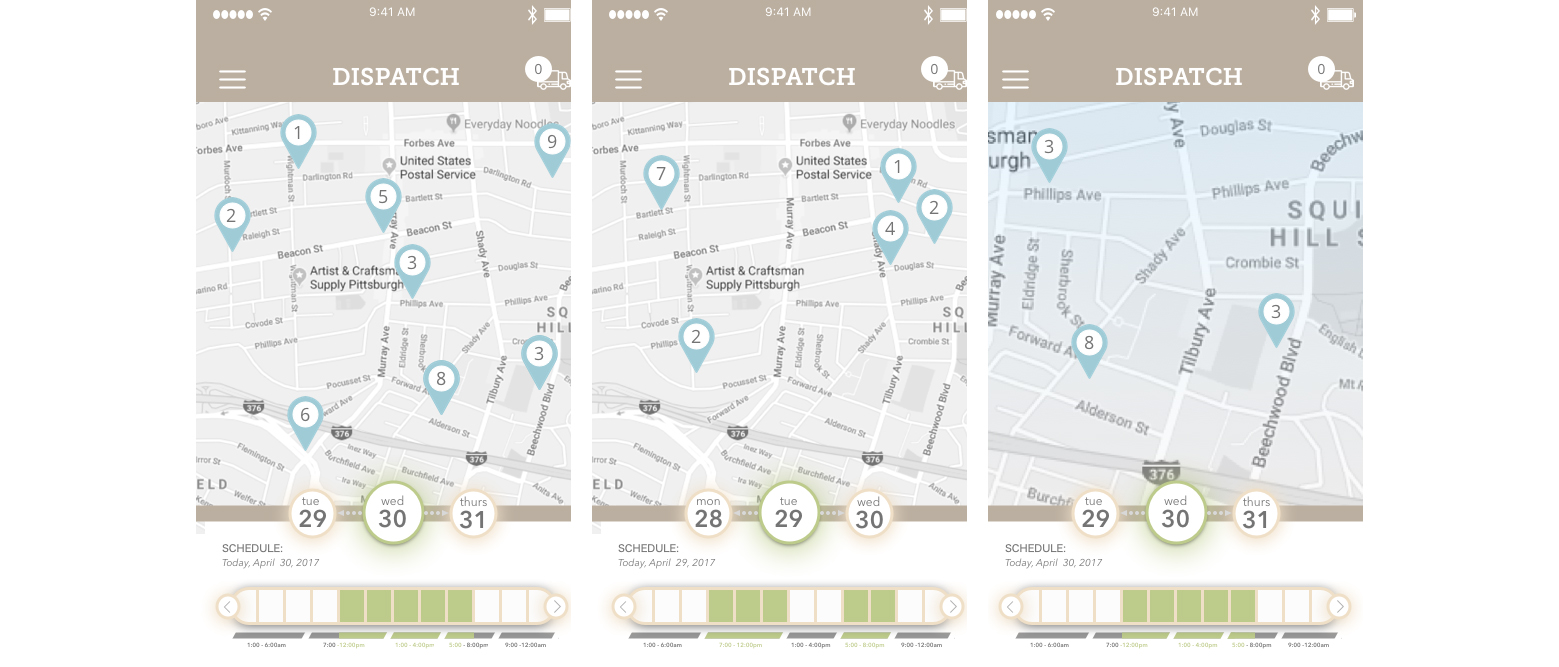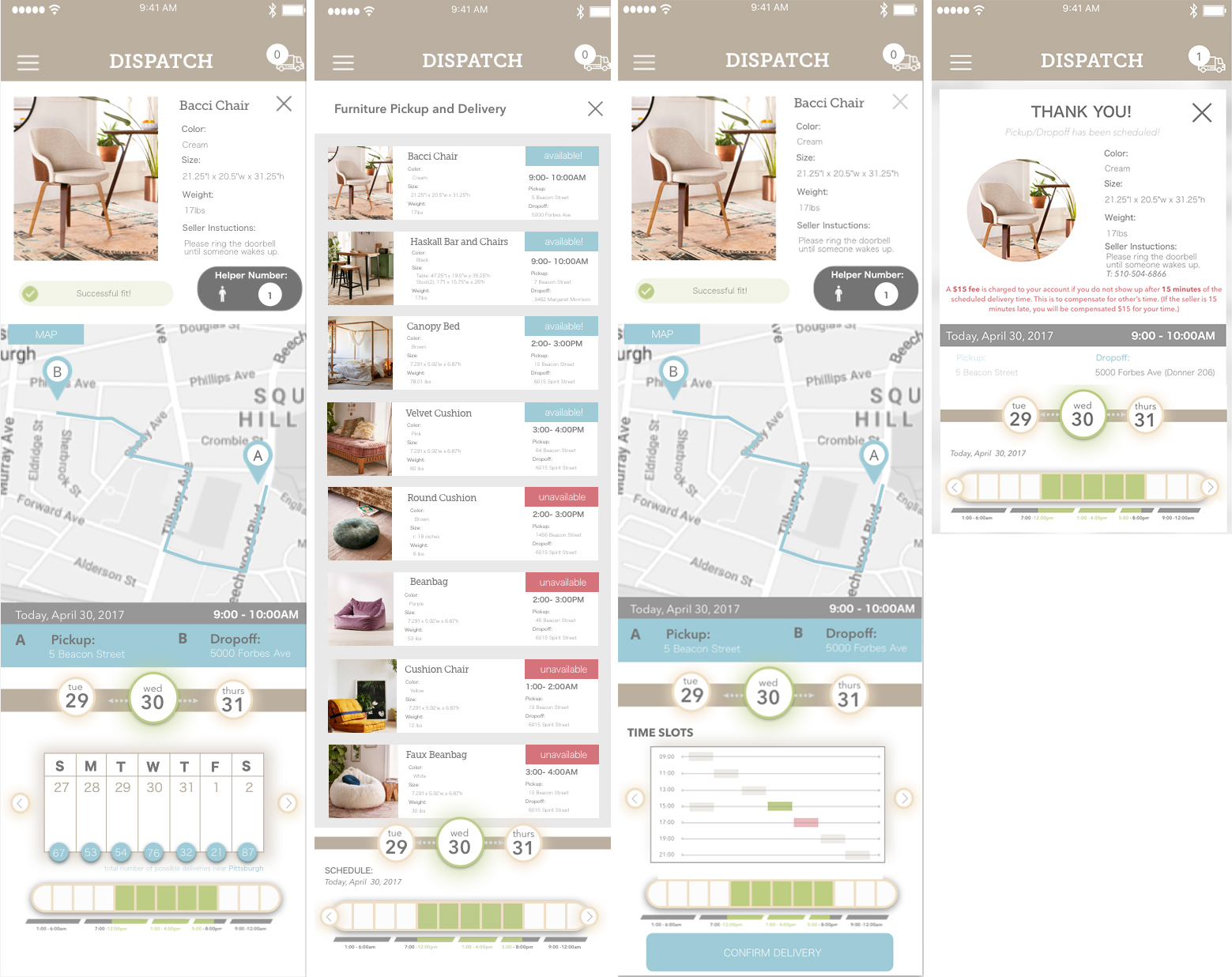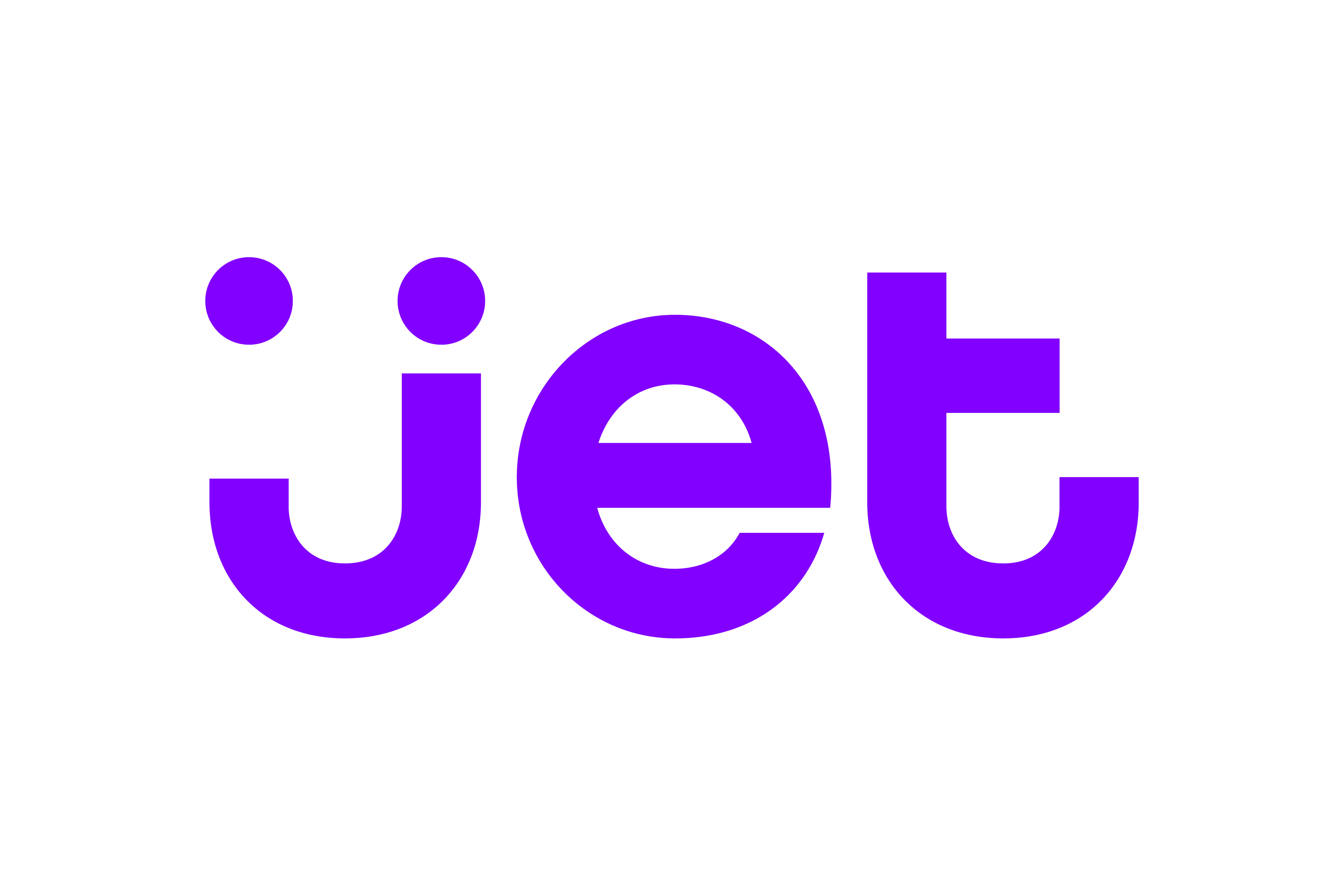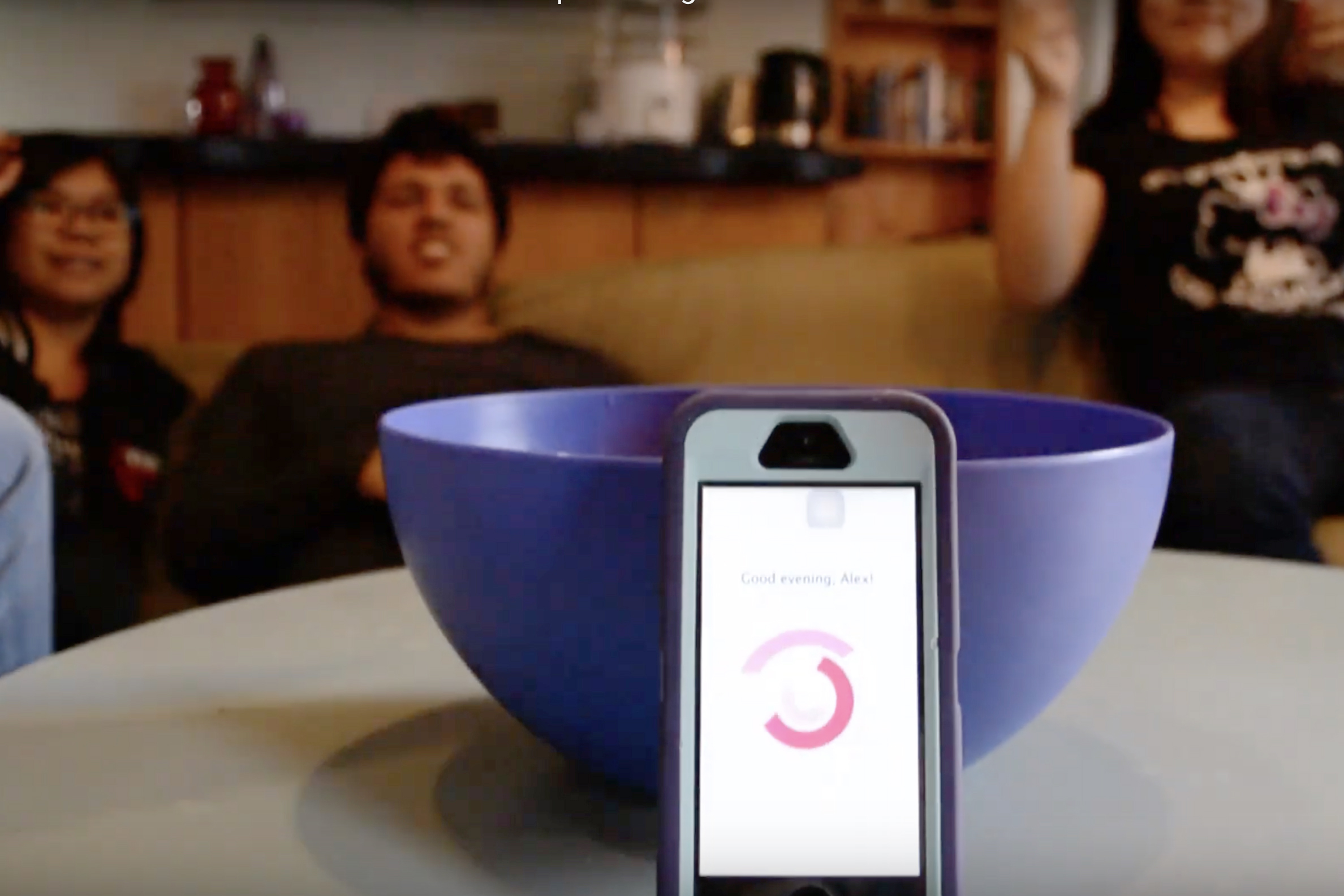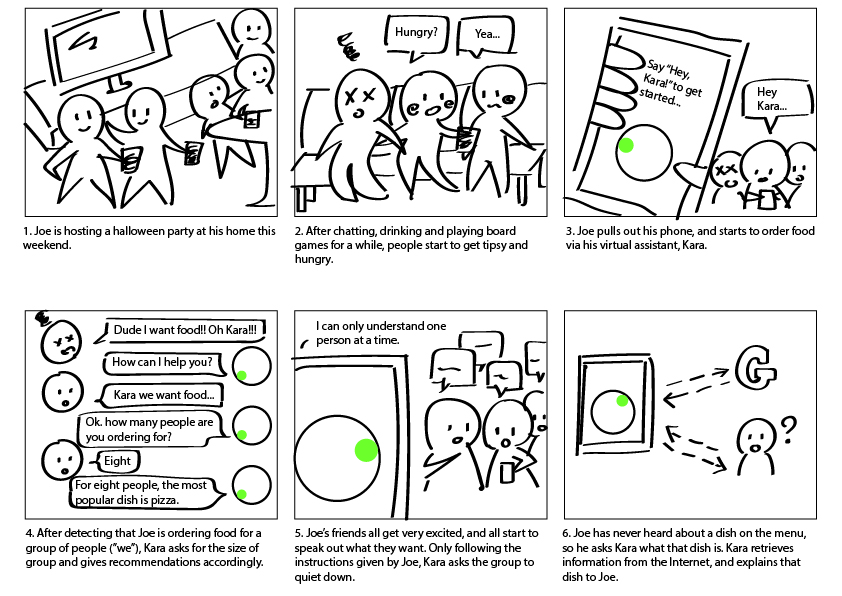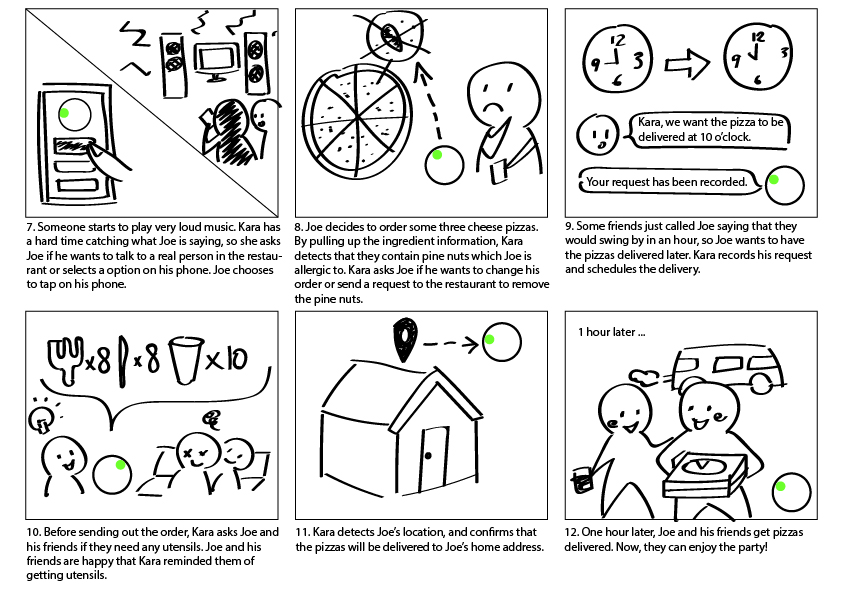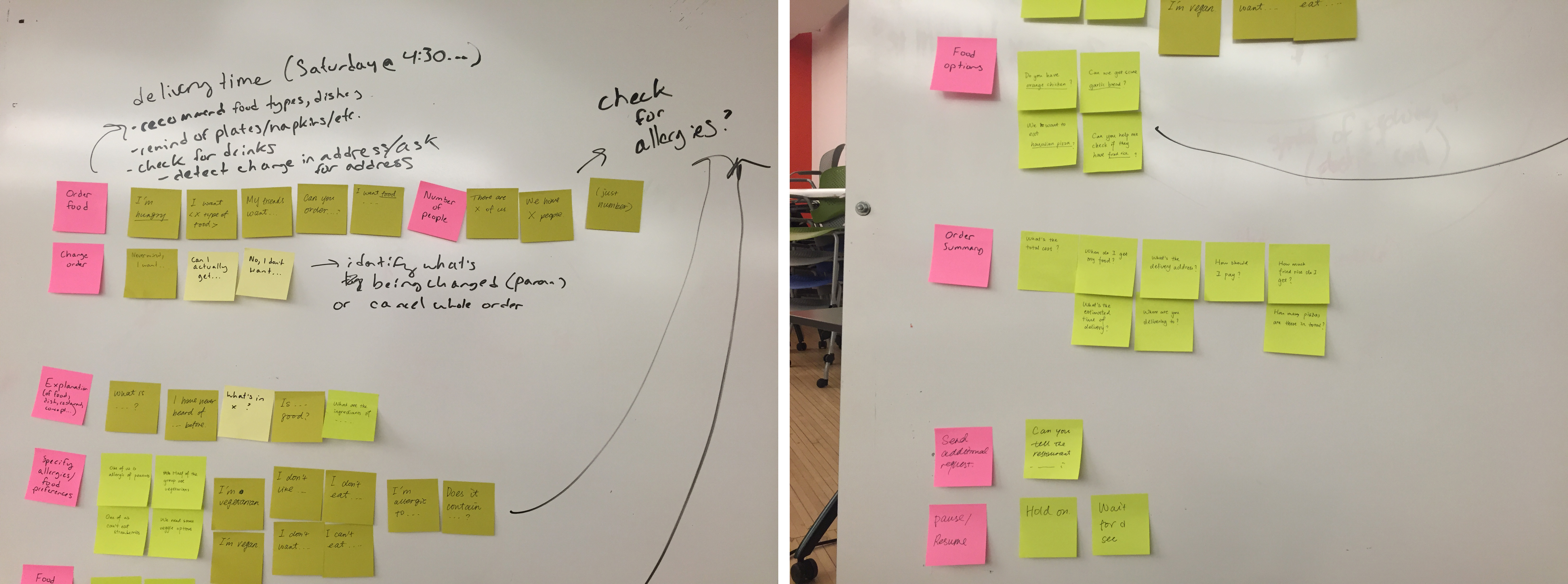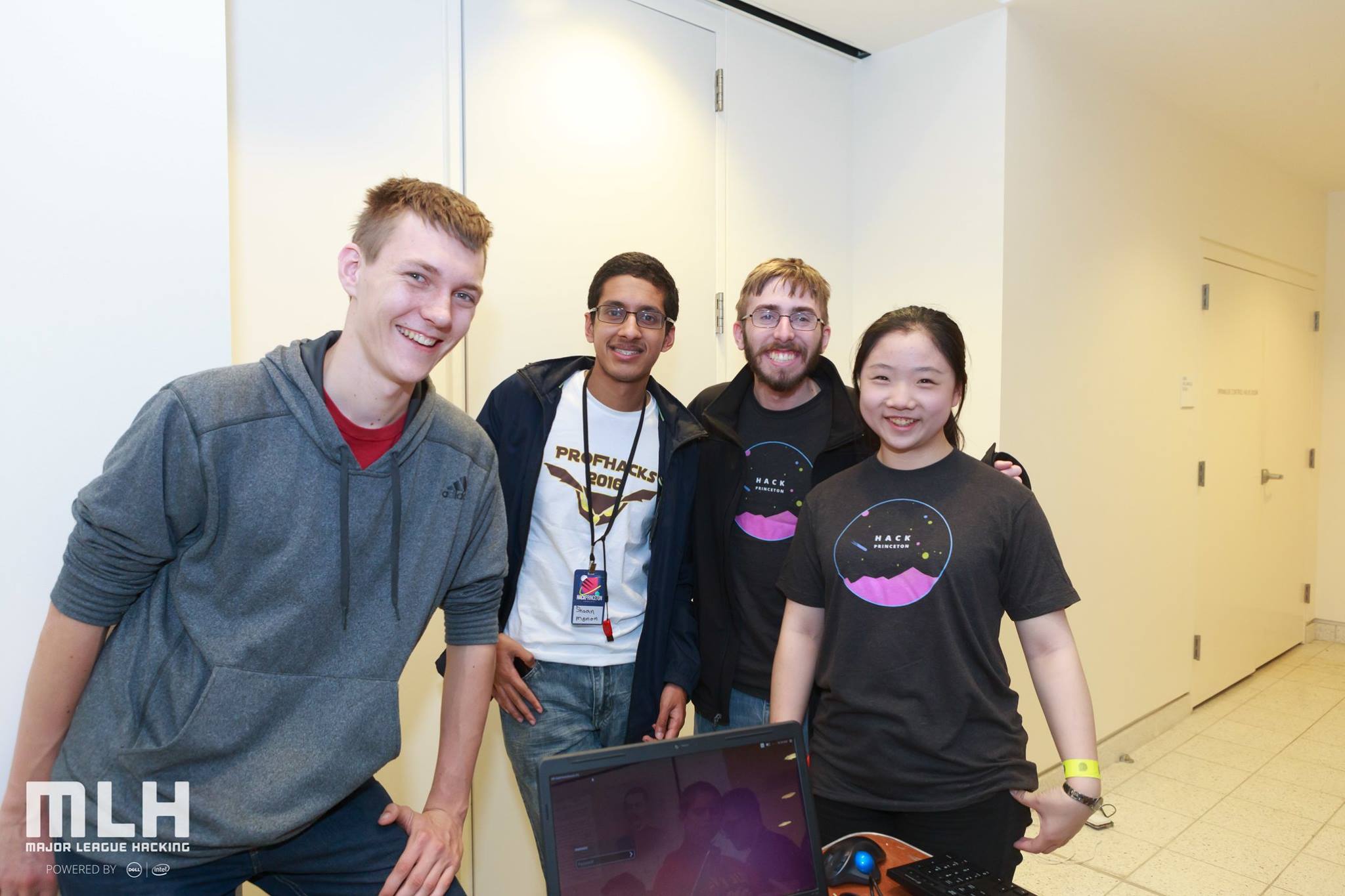Hebo 2.0: Post-Operative Care Assistant
In this project, my teammates and I conducted extensive user research at the UPMC Falk clinic with patients after Mohr's Surgery, among which were mostly older adults. By understanding users' needs during the post-operative care process and in older adults using technologies in general, we came up with the design of a mobile post-operative care asssistant, Hebo 2.0.
This project was my Capstone Project for the HCI undergrad secondary major at CMU, advised by Prof. Karen Berntsen and Prof. Vincent Aleven.
Try out our interactive prototype!
Background
After a patient undergoes Mohs surgery, they typically have questions and concerns about their postoperative treatment. Before and after surgery they are given explicit instructions on how to care for themselves and also provided with an instruction sheet to take home with them. Unfortunately, many patients struggle to remember and to interpret the basic instructions that are provided to them. Therefore, patients require support from clinical staff over the phone or in the clinic to address common concerns. Moreover, staff members often have to dedicate significant portions of time to communicate information already provided to the patients.
Stakeholders
We created a stakeholder map dividing our stakeholders into several parties, based on their interactions with patients in post-operative care. The surgeon who carries out the surgery; UPMC staff who help patients change dressing, call patients for check-up and answer questions; patients’ immediate family, extended family, and friends and community who might take care of them during the post-operative process.
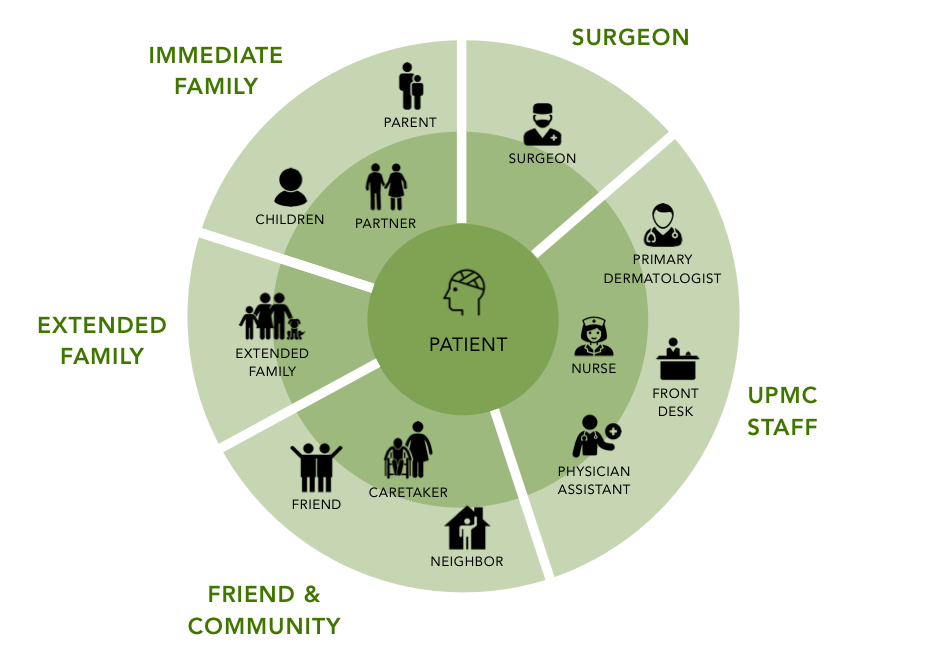
User Research
We did job shadowing and conducted interviews with both clinic staff and patients to better understand their needs and existing challenges in the process. To better understand their feelings, we included activities such as card sorting in our interview process.
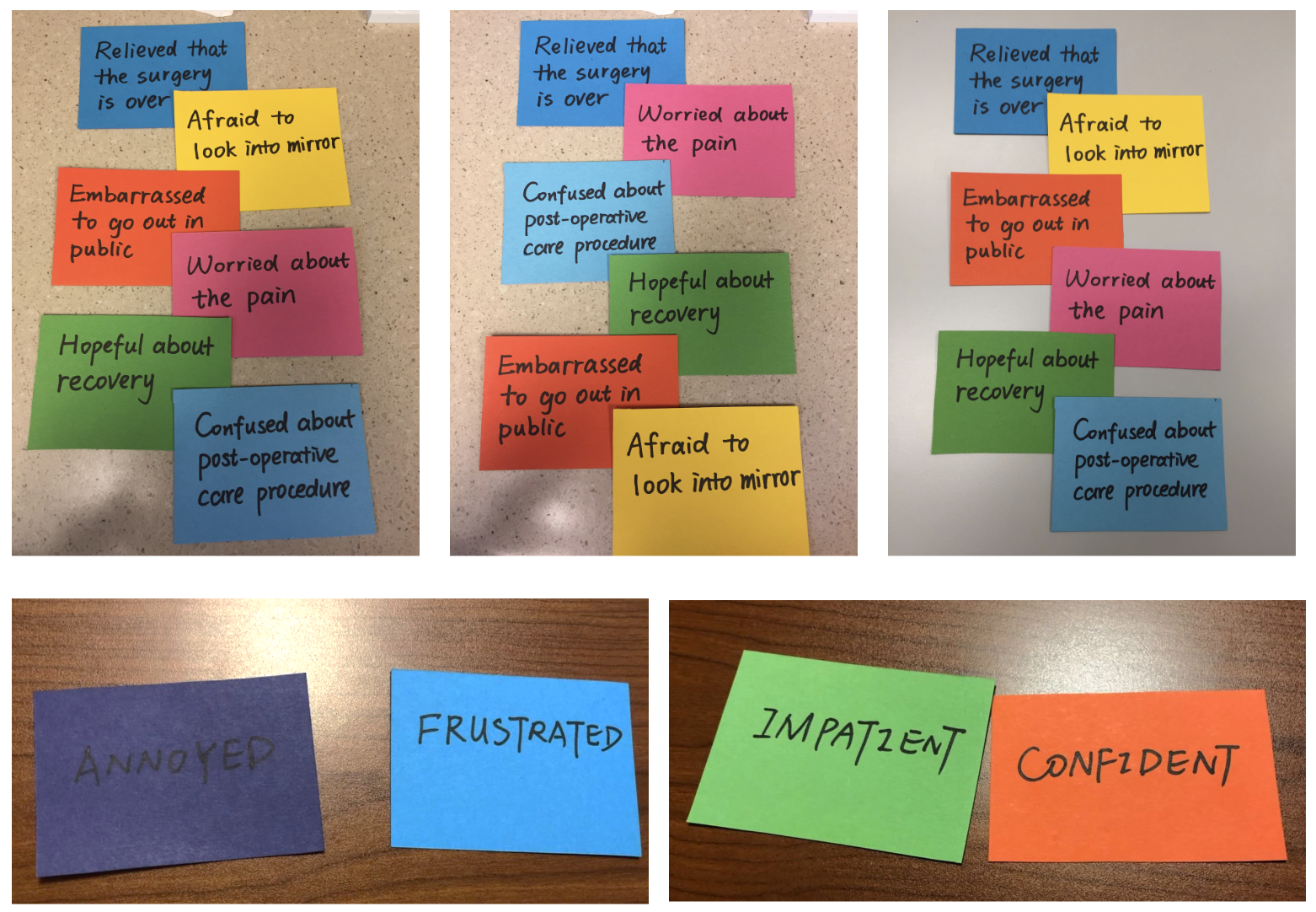
We then came up with a journey map for nurses and patients, which helped us better understand the goals and needs of these stakeholders. We looked at the surgery procedure by the six phases: diagnosis, pre-surgery, during surgery, right after surgery, 48-hour post-surgery, one-week check-up and later. For each phase, we discussed patients’ emotions and thoughts, their tasks and touchpoints, in order to better understand each part of the surgery process and discover opportunities. Based on that, we used sticky notes to discover existing pain points in different phases of surgery, especially the post surgery phases.
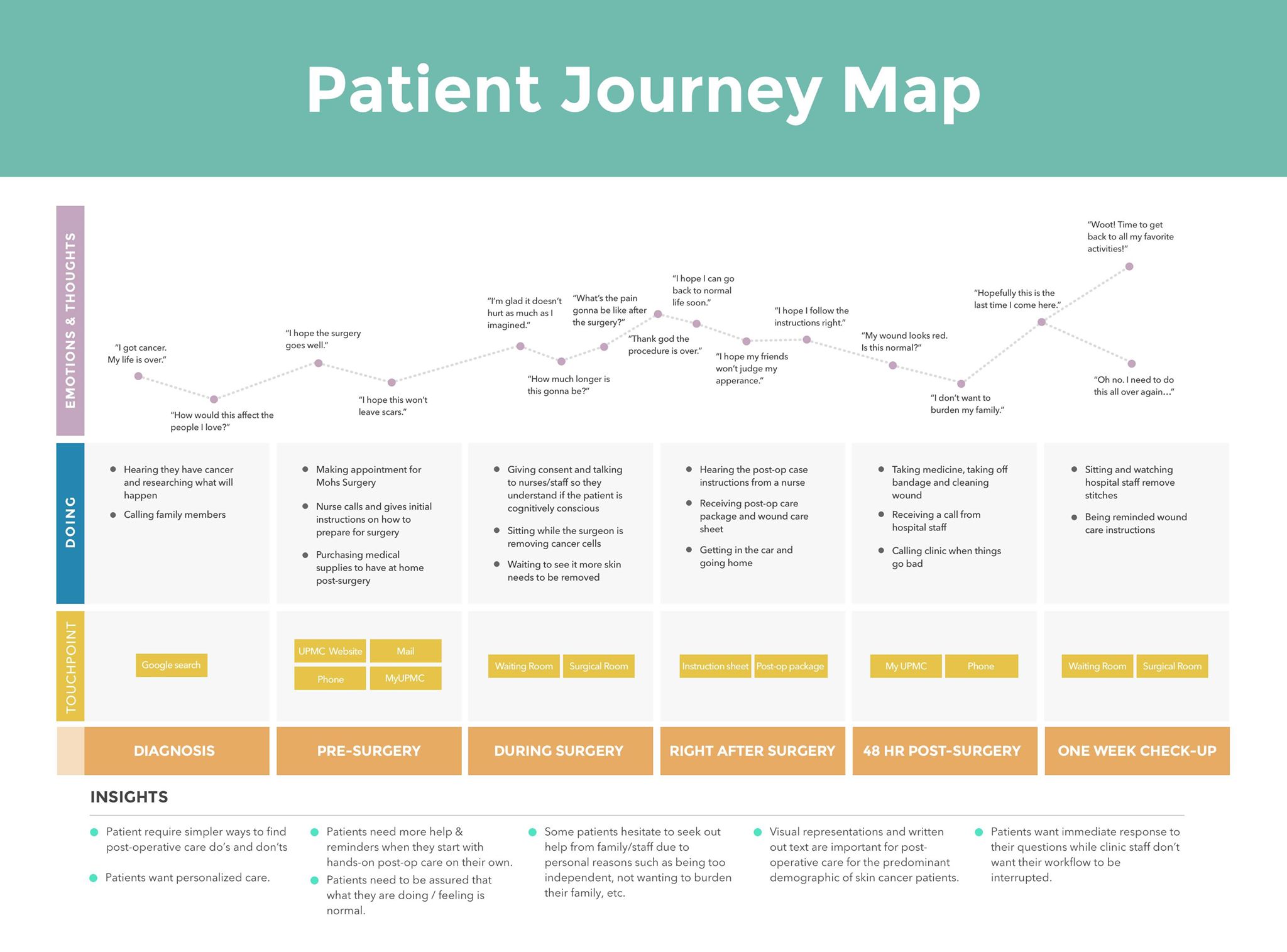
To better understand patients’ experiences during post-operative care at home, specifically during the dressing change process, we did further empirical research and tried to change wound dressing for ourselves like patients after the Mohr’s surgery.
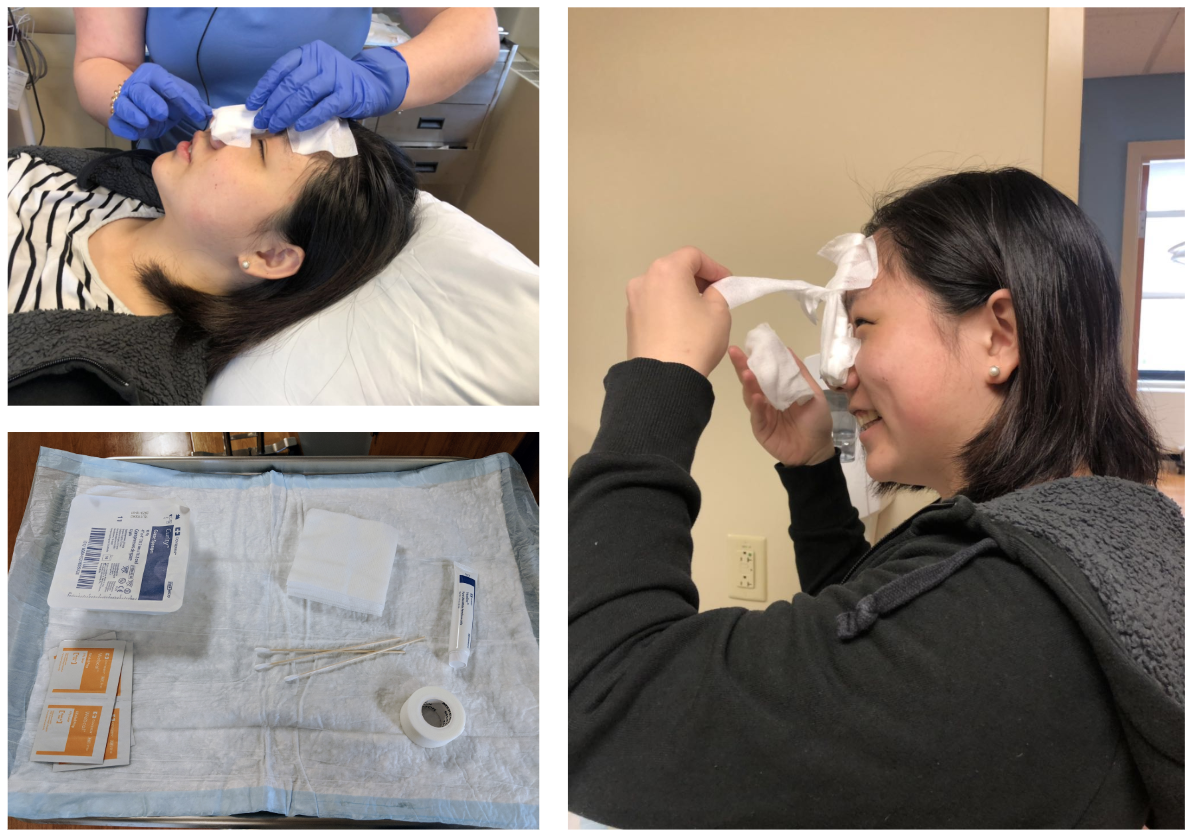
Takeaways from User Research
We summarized our takeaways from user research into the following key insights:
-
Patients need more help when they start with hands-on post-operative care on their own.
-
Patients need to be assured that what they are doing / feeling is normal.
-
Patients’ feelings and emotions affect their post-op decisions.
-
Patients want personalized care.
-
Visual representations and written out text are important for post-operative care for the predominant demographic of skin cancer patients.
-
Some patients hesitate to seek for help from family/staff due to personal reasons. (e.g. being too independent, not wanting to burden family, thinking they are probably fine)
-
Patients want immediate response to their questions while clinic staff don’t want their workflow to be interrupted.
-
Patients require simpler ways to find post-operative care dos and don’ts.
Storyboards
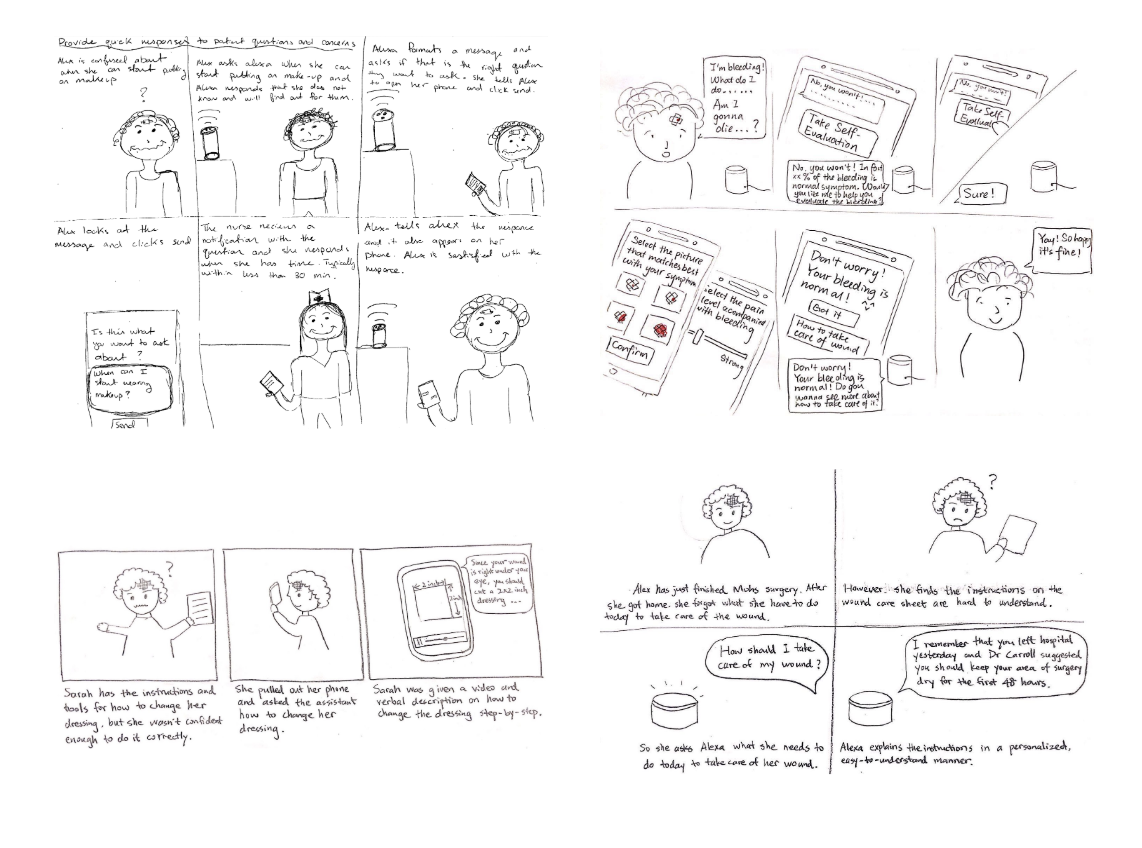
Lo-Fi Prototype
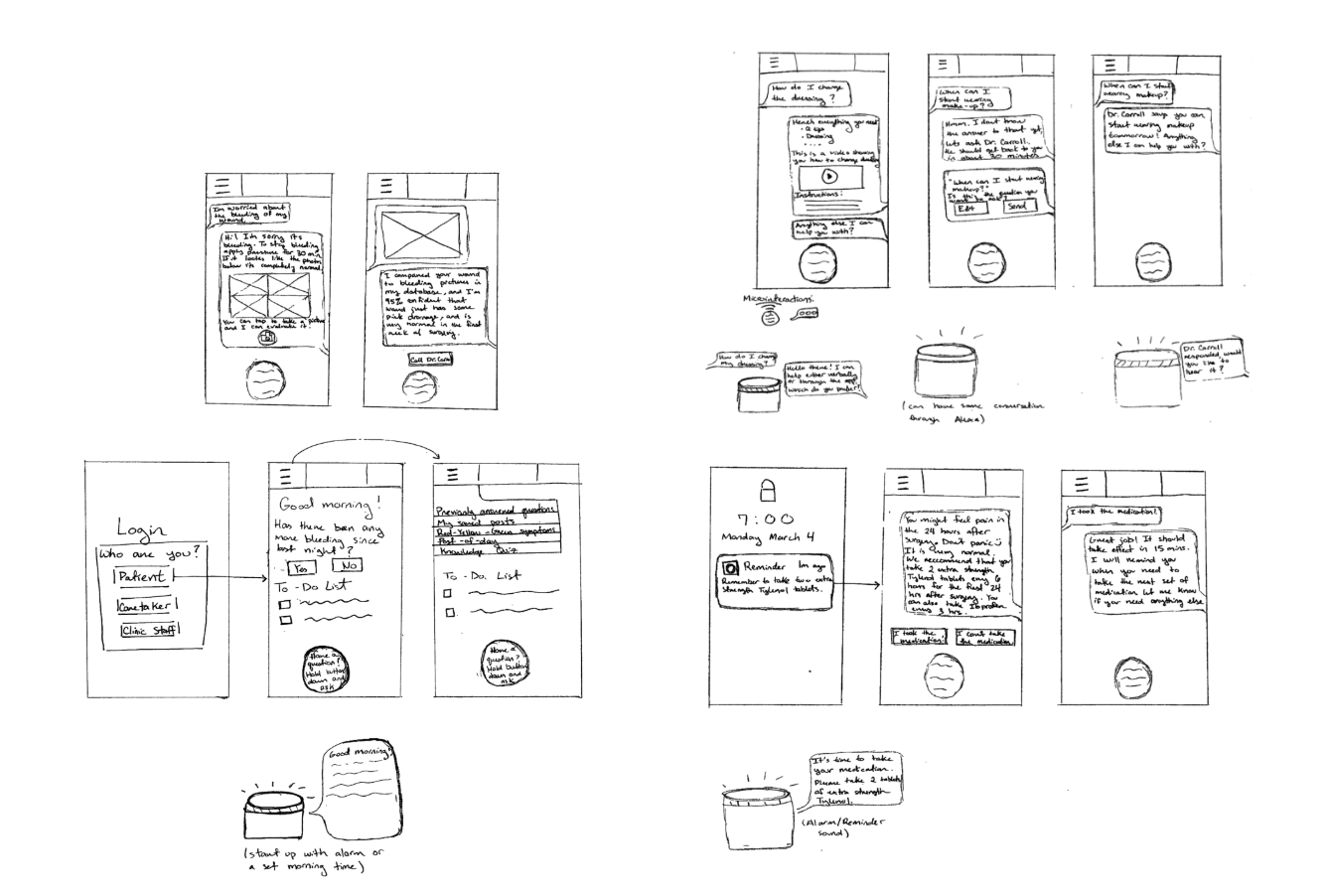
Mid-Fi Prototype
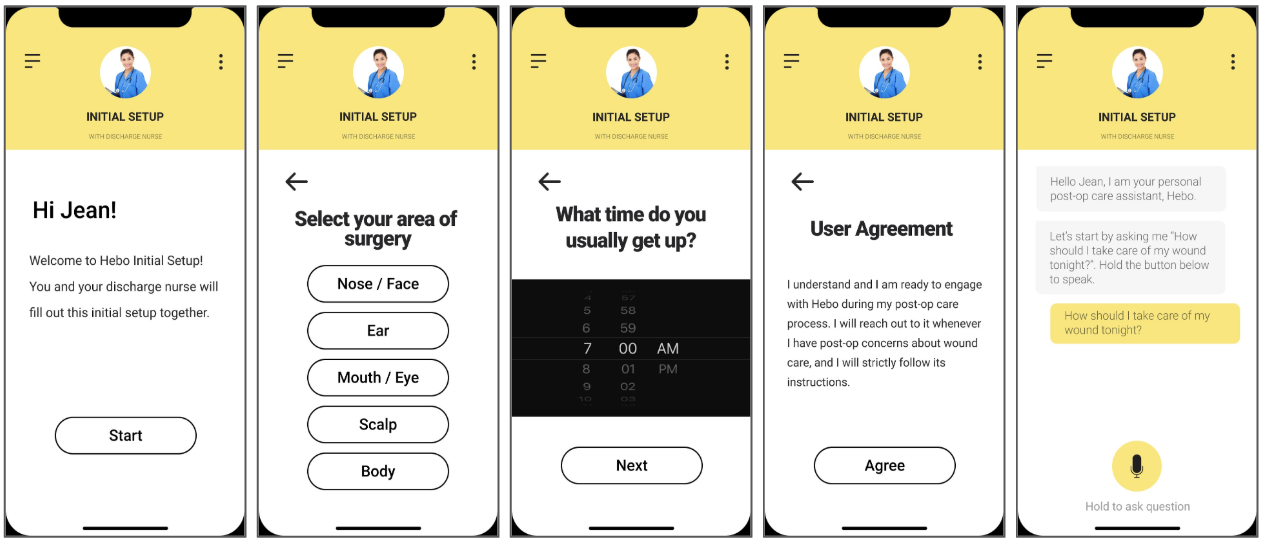
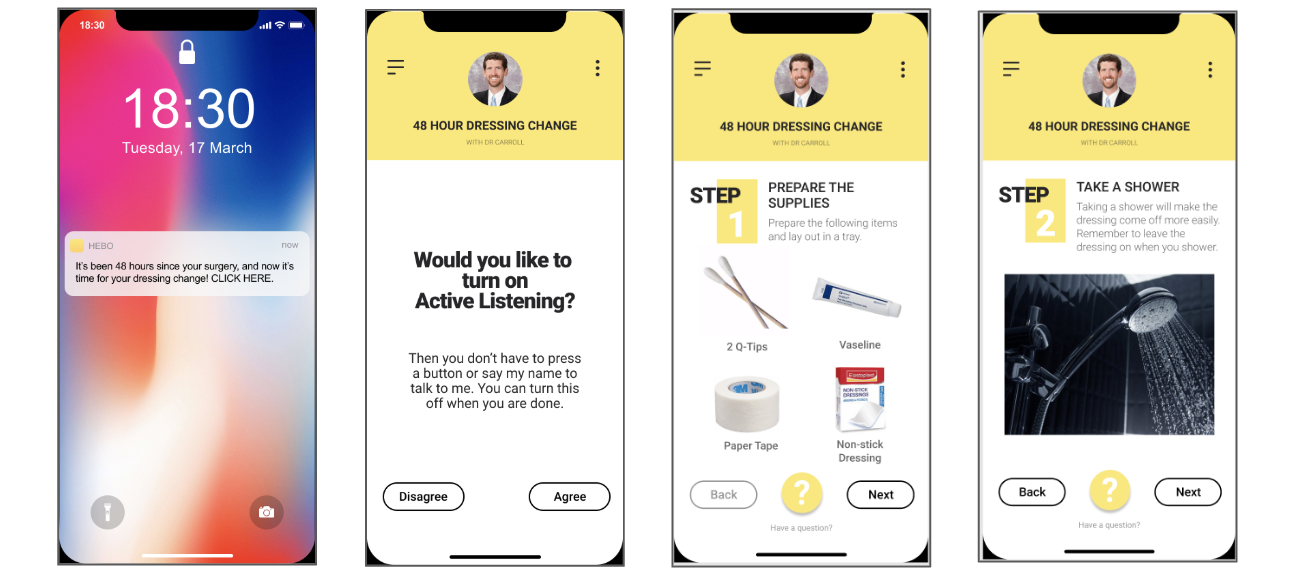
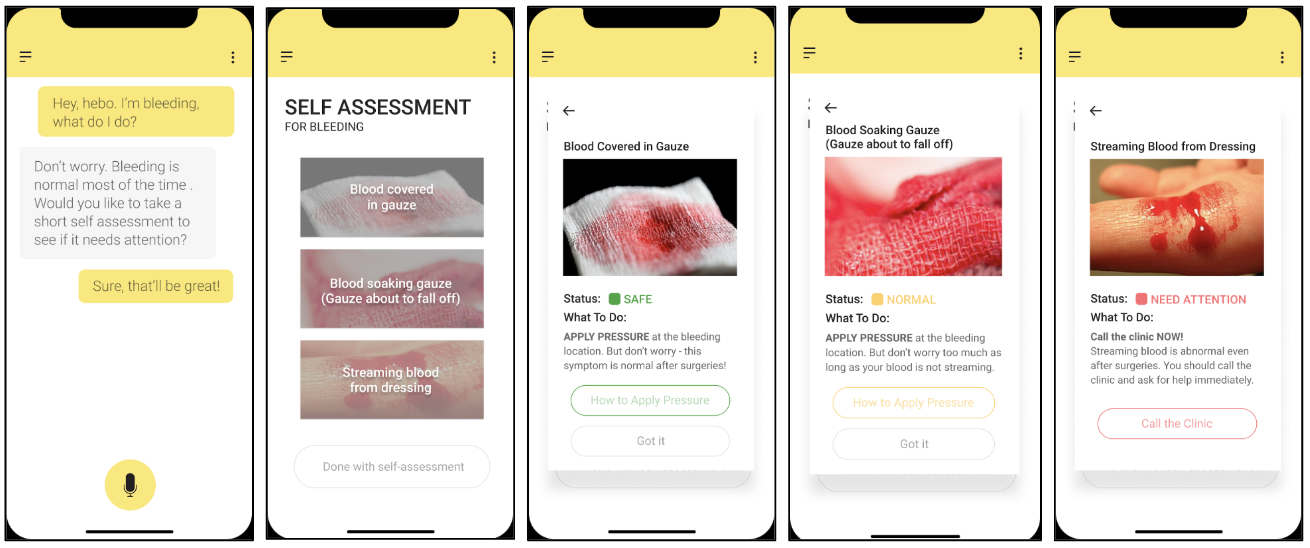
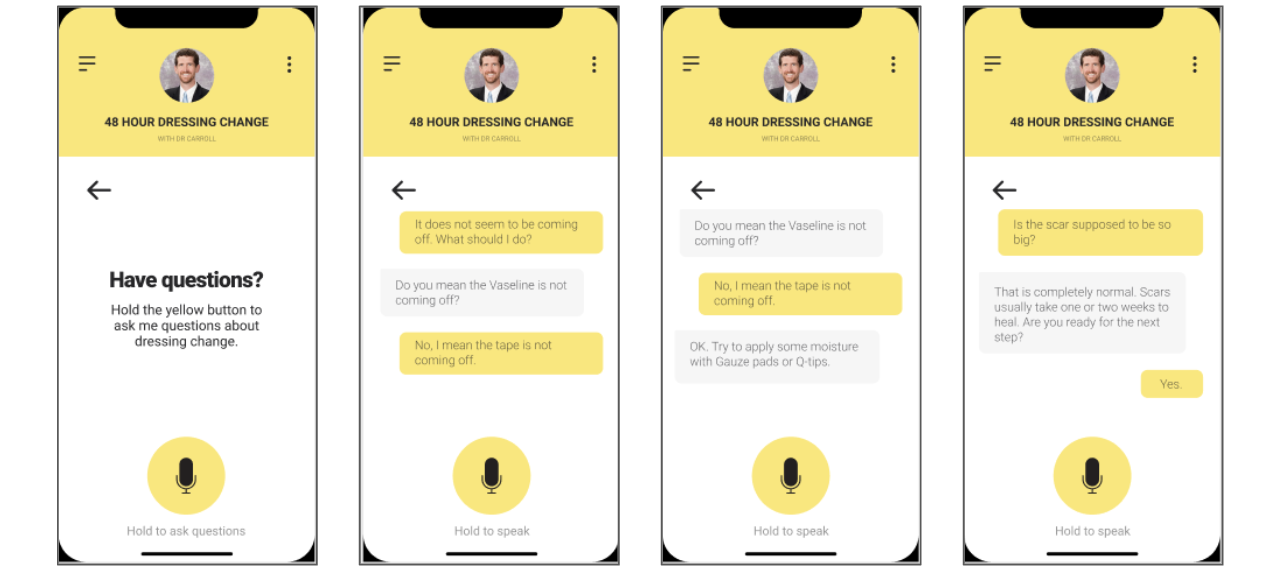
Iterations & Refinements
To test out our mid-fi prototype and improve the design, our team conducted three rounds of user testing in the UPMC Falk clinic. We tested the prototype with various different potential user groups of the assistant, including clinic staff (residential doctors, physician assistants, and nurses) as well as patients. During user testing, we set different scenarios for our users, including being discharged from the clinic, changing dressing at home for the first time, concerned about bleeding, and feeling pain.
Overall, we received very positive feedback during the three rounds of user testing in the clinic. Except for feedbacks on the design of the assistant, we’ve also put a lot of focus on the accuracy of medical terms and processes to ensure that the assistant gives correct instructions and suggestions, and received valuable feedback during user testing.
Based the feedback we received during user testing, our refinements mainly focused on:
-
Improving usability and accessibility of the app
-
Adding more feedforward and feedback to make the app more intuitive
-
Adding conversational features to allow hands-free interactions
-
Changing certain wordings to make sure medical terms and demonstrations are accurate
-
Having detailed stepwise breakdown of processes to guide users step by step, with explanations on each step
-
Establishing trust by giving encouraging feedback to users
-
Making action terms clearer and adding more error prevention features
User Testing Quotes
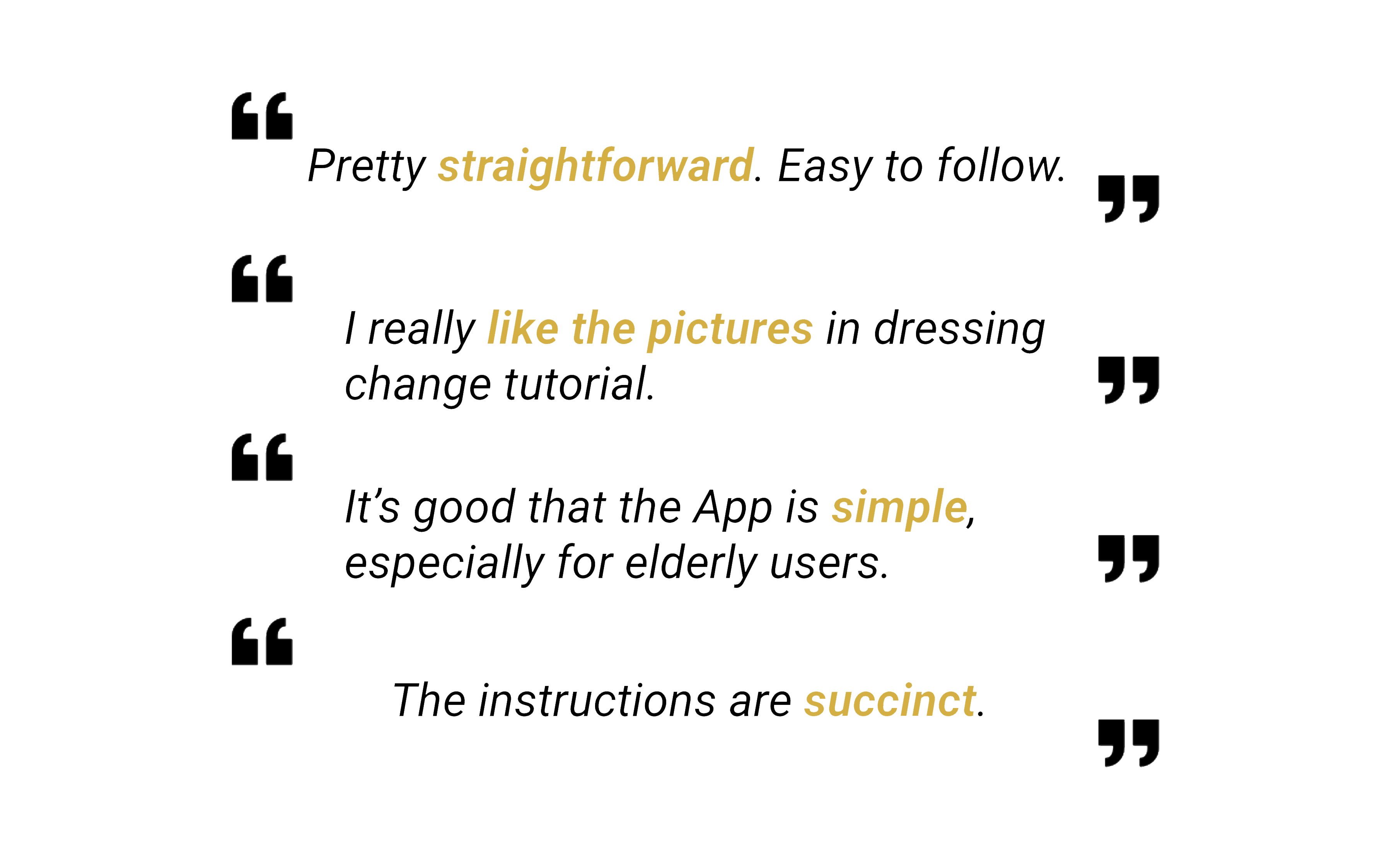
For more details, please check out our research report and final report.
Team Members
Nadia Razek, Anyi Diao, Ying Chen
 来日本是一场蓄谋已久的大型刻奇表演。
计划好每一条社交媒体的更新,在奈良对着古建筑幻想千年前的风吹过堂前;在京都播放“望这晚细雪飘满地”,拍傍晚灯火阑珊的街道;想好拍怎样角度的富士山,如果运气好的话有前景里虚化的樱花树,在Instagram上配文“谁能凭爱意要富士山私有”;学小红书上拍一段十二秒的富士山骑行视频,“钱还会回来的,但我再也不会二十几岁在富士山下绕湖骑车一整天了”;在东京借“忘掉我跟你恩怨,樱花开了几转,东京之旅一早比一世遥远”再多表演一秒伤感;在涩谷驿前郑重其事地致谢林智乐陪我过了那段最艰难的日子。
到富士山那天下雨。弄错了大巴车站,在雨中下车研究进山的公交,又一路推着箱子上山。路上辗转五个小时终于到酒店,被告知房间还在打扫不能入住。饿到快要昏厥,于是从酒店租了自行车,下山觅食。
山中湖烟雨氤氲,真有三分像传说中的蓬莱仙境。富士山不见踪影。
我原以为“谁能凭爱意要富士山私有”是没人能把富士山搬回家,那拥有过一刻也就足够;我原以为会在平野之滨用单反相机拍下和所有人一样的高清照片,意料之中地表演一番美好的伤感;我或许又预设了能获得些新的见解,譬如哪怕共度过这一刻也能算作将富士山私有。但我没想到富士山压根没给我这个机会,干脆没跟我打这个照面,只留下我和这蓬莱仙境般的水面面面相觑。
来都来了,就当锻炼身体。我在烟雾里绕湖骑车。路过樱花树,树下拍照的情侣,春游的小学生,独自清理羽毛的天鹅。和想象中一样,我像所有人一样在富士山下播放《富士山下》,跟着哼唱“曾沿着雪路浪游,为何为好事泪流”;仰着头,迎着山里的风,高声地嚎“原来过得很快乐,只我一人未发觉”。从车座上站起身,松开刹车任凭地心引力推着车加速,山间的风从我两颊略过。
骑车环湖到半途,烟雾渐渐散了些。那一刻突然感到了慌乱,是醉酒通宵之后看到天色将明的慌乱,被迫清醒的白天永远不会到来的奢望。直至此刻我才明白美好的从来都是关于富士山的概念,是意象,是幻想,是云雾背后的万千种可能。以至于真实的富士山快要出现时反倒感到抗拒。京都,涩谷,二丁目,富士山。京都之雪本就与京都无关,只是恰好单曲循环在那个终于放下很多旧事、在匹兹堡的草地上看着星星悸动的晚上;涩谷驿前和忠犬八公也与我并无联系,只是那首歌偏巧陪了那段极特殊的日子里许多趟累到发懵的早上开车去学校的路。
我拍了许多照片视频,直到手机电量耗尽,画面干净得只有一面湖水和满天的云,没一丝富士山的影子。我笑,这不是完美诠释么,“谁都只得那双手,靠拥抱亦难任你拥有,要拥有必先懂失去怎接受”。富士山比我预期得还要傲娇,可拿它有什么办法呢。
我自然知道有办法在网上事先查好当日的能见度预测,再对着天气预报安排行程。但不是我不愿意追着富士山找个大好的晴天来看它。只是时间太有限,能看它的统共只有这一两天。就好像只有短短几天去看阿拉斯加的极光,自然由不得我选能看到怎样的天色;而假若我能在北极圈住足够久,就总有等到在亮如白昼的漫天极光下看书的那一天——假若我能在这里呆足够久,我也一定能够等到樱花盛开朝霞绚丽的富士山的春和景明。但人生只有这么长,设限总是那么多,不如意十之八九,遗憾总是大多数。
快要回到出发点准备往酒店去的路上,阳光渐强,云层突然变淡,转过一个弯越过层层树林之后,富士山的一角赫然出现在了我眼前。猝不及防。我像踩风火轮一般疯狂地踩着踏板往几百米开外的平野之滨狂飙,车轮快要冒出火星子。终于到达后一个急刹差点从车上飞出去,匆匆拎起背在身上的单反,对着山狂按快门。
我说不上是惊喜,还是得意,或是惶恐,是受宠若惊,又是会心一笑,是如愿以偿。但好像富士山的出现是某种上天的嘉奖肯定,哪怕全网的预测都说今天绝无可能,我也赶在云层不留意时抢到了几个片刻看到山的一隅。我偏要赌,我乐意。人生不就活个明知不可为而为之的倔脾气。
或许有生之年我还会再来富士山。或许能看到晴空万里,日出粉金色的富士山顶,山下天鹅戏水,樱花开得正盛。或许我见不到,但总有人能有幸见到它最好的时候;当然也不会再纠结樱花开了几转——花开花谢都是寻常事,春去秋来,樱花年年都会再开。
来日本是一场蓄谋已久的大型刻奇表演。
计划好每一条社交媒体的更新,在奈良对着古建筑幻想千年前的风吹过堂前;在京都播放“望这晚细雪飘满地”,拍傍晚灯火阑珊的街道;想好拍怎样角度的富士山,如果运气好的话有前景里虚化的樱花树,在Instagram上配文“谁能凭爱意要富士山私有”;学小红书上拍一段十二秒的富士山骑行视频,“钱还会回来的,但我再也不会二十几岁在富士山下绕湖骑车一整天了”;在东京借“忘掉我跟你恩怨,樱花开了几转,东京之旅一早比一世遥远”再多表演一秒伤感;在涩谷驿前郑重其事地致谢林智乐陪我过了那段最艰难的日子。
到富士山那天下雨。弄错了大巴车站,在雨中下车研究进山的公交,又一路推着箱子上山。路上辗转五个小时终于到酒店,被告知房间还在打扫不能入住。饿到快要昏厥,于是从酒店租了自行车,下山觅食。
山中湖烟雨氤氲,真有三分像传说中的蓬莱仙境。富士山不见踪影。
我原以为“谁能凭爱意要富士山私有”是没人能把富士山搬回家,那拥有过一刻也就足够;我原以为会在平野之滨用单反相机拍下和所有人一样的高清照片,意料之中地表演一番美好的伤感;我或许又预设了能获得些新的见解,譬如哪怕共度过这一刻也能算作将富士山私有。但我没想到富士山压根没给我这个机会,干脆没跟我打这个照面,只留下我和这蓬莱仙境般的水面面面相觑。
来都来了,就当锻炼身体。我在烟雾里绕湖骑车。路过樱花树,树下拍照的情侣,春游的小学生,独自清理羽毛的天鹅。和想象中一样,我像所有人一样在富士山下播放《富士山下》,跟着哼唱“曾沿着雪路浪游,为何为好事泪流”;仰着头,迎着山里的风,高声地嚎“原来过得很快乐,只我一人未发觉”。从车座上站起身,松开刹车任凭地心引力推着车加速,山间的风从我两颊略过。
骑车环湖到半途,烟雾渐渐散了些。那一刻突然感到了慌乱,是醉酒通宵之后看到天色将明的慌乱,被迫清醒的白天永远不会到来的奢望。直至此刻我才明白美好的从来都是关于富士山的概念,是意象,是幻想,是云雾背后的万千种可能。以至于真实的富士山快要出现时反倒感到抗拒。京都,涩谷,二丁目,富士山。京都之雪本就与京都无关,只是恰好单曲循环在那个终于放下很多旧事、在匹兹堡的草地上看着星星悸动的晚上;涩谷驿前和忠犬八公也与我并无联系,只是那首歌偏巧陪了那段极特殊的日子里许多趟累到发懵的早上开车去学校的路。
我拍了许多照片视频,直到手机电量耗尽,画面干净得只有一面湖水和满天的云,没一丝富士山的影子。我笑,这不是完美诠释么,“谁都只得那双手,靠拥抱亦难任你拥有,要拥有必先懂失去怎接受”。富士山比我预期得还要傲娇,可拿它有什么办法呢。
我自然知道有办法在网上事先查好当日的能见度预测,再对着天气预报安排行程。但不是我不愿意追着富士山找个大好的晴天来看它。只是时间太有限,能看它的统共只有这一两天。就好像只有短短几天去看阿拉斯加的极光,自然由不得我选能看到怎样的天色;而假若我能在北极圈住足够久,就总有等到在亮如白昼的漫天极光下看书的那一天——假若我能在这里呆足够久,我也一定能够等到樱花盛开朝霞绚丽的富士山的春和景明。但人生只有这么长,设限总是那么多,不如意十之八九,遗憾总是大多数。
快要回到出发点准备往酒店去的路上,阳光渐强,云层突然变淡,转过一个弯越过层层树林之后,富士山的一角赫然出现在了我眼前。猝不及防。我像踩风火轮一般疯狂地踩着踏板往几百米开外的平野之滨狂飙,车轮快要冒出火星子。终于到达后一个急刹差点从车上飞出去,匆匆拎起背在身上的单反,对着山狂按快门。
我说不上是惊喜,还是得意,或是惶恐,是受宠若惊,又是会心一笑,是如愿以偿。但好像富士山的出现是某种上天的嘉奖肯定,哪怕全网的预测都说今天绝无可能,我也赶在云层不留意时抢到了几个片刻看到山的一隅。我偏要赌,我乐意。人生不就活个明知不可为而为之的倔脾气。
或许有生之年我还会再来富士山。或许能看到晴空万里,日出粉金色的富士山顶,山下天鹅戏水,樱花开得正盛。或许我见不到,但总有人能有幸见到它最好的时候;当然也不会再纠结樱花开了几转——花开花谢都是寻常事,春去秋来,樱花年年都会再开。
